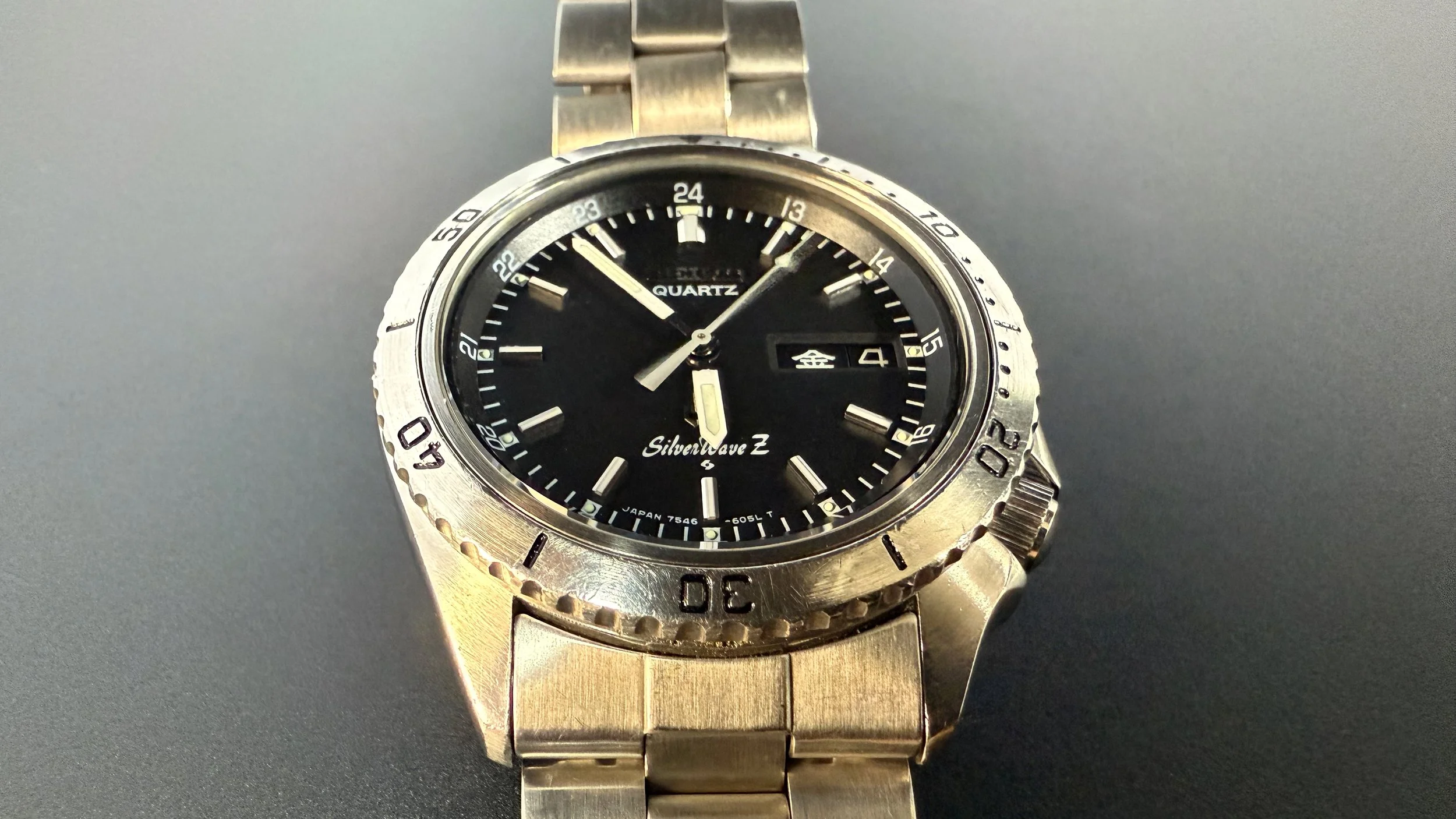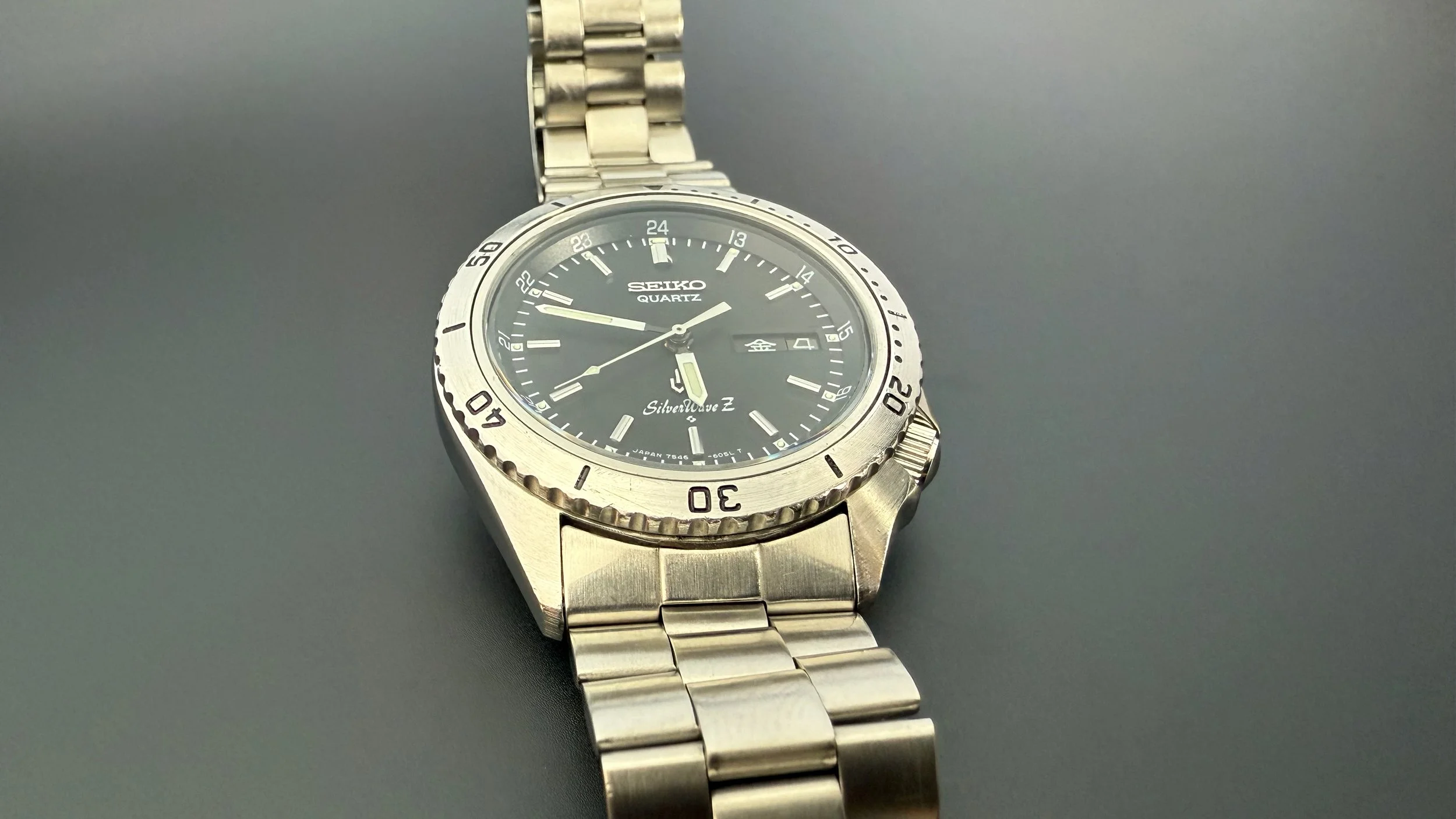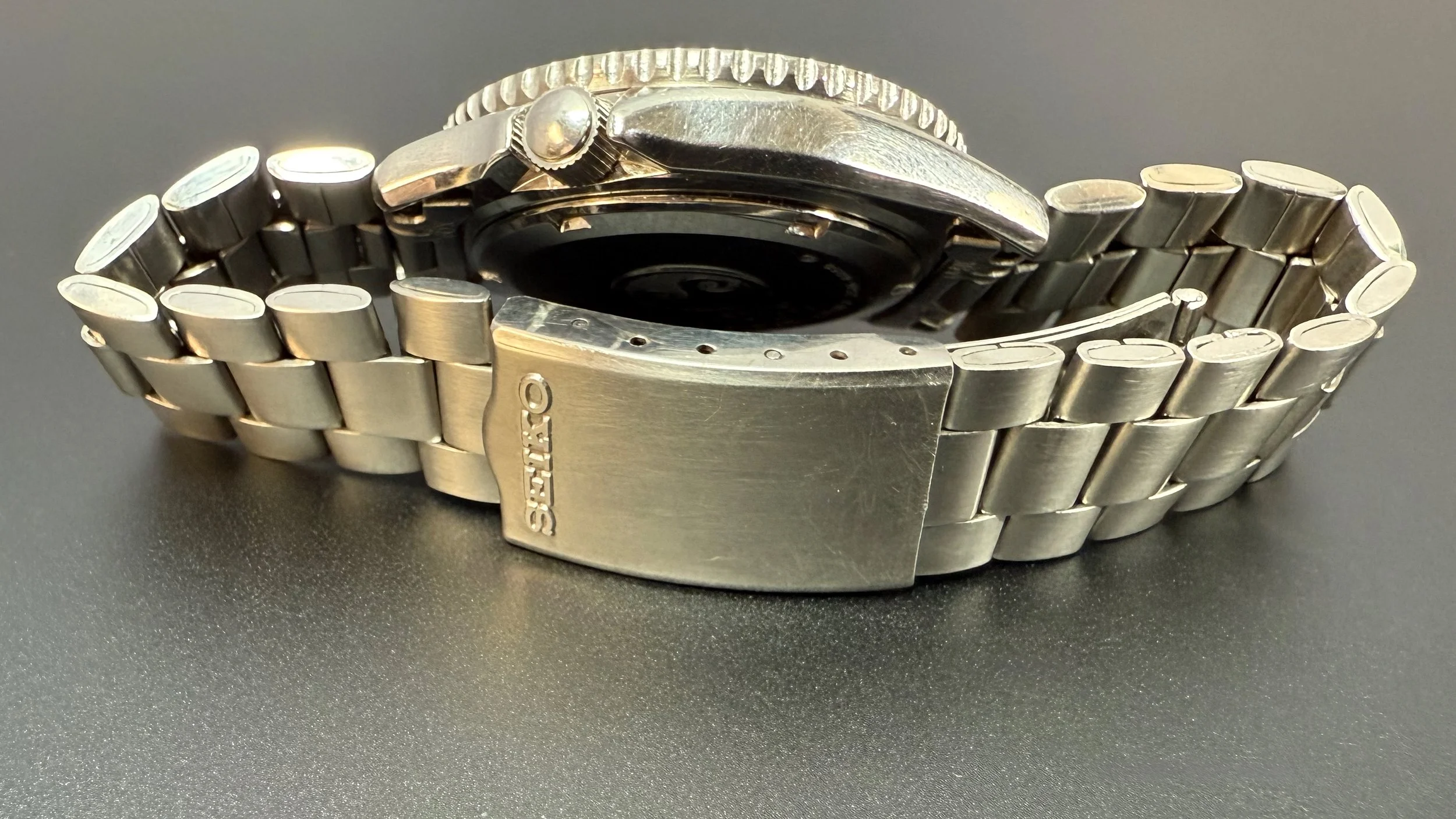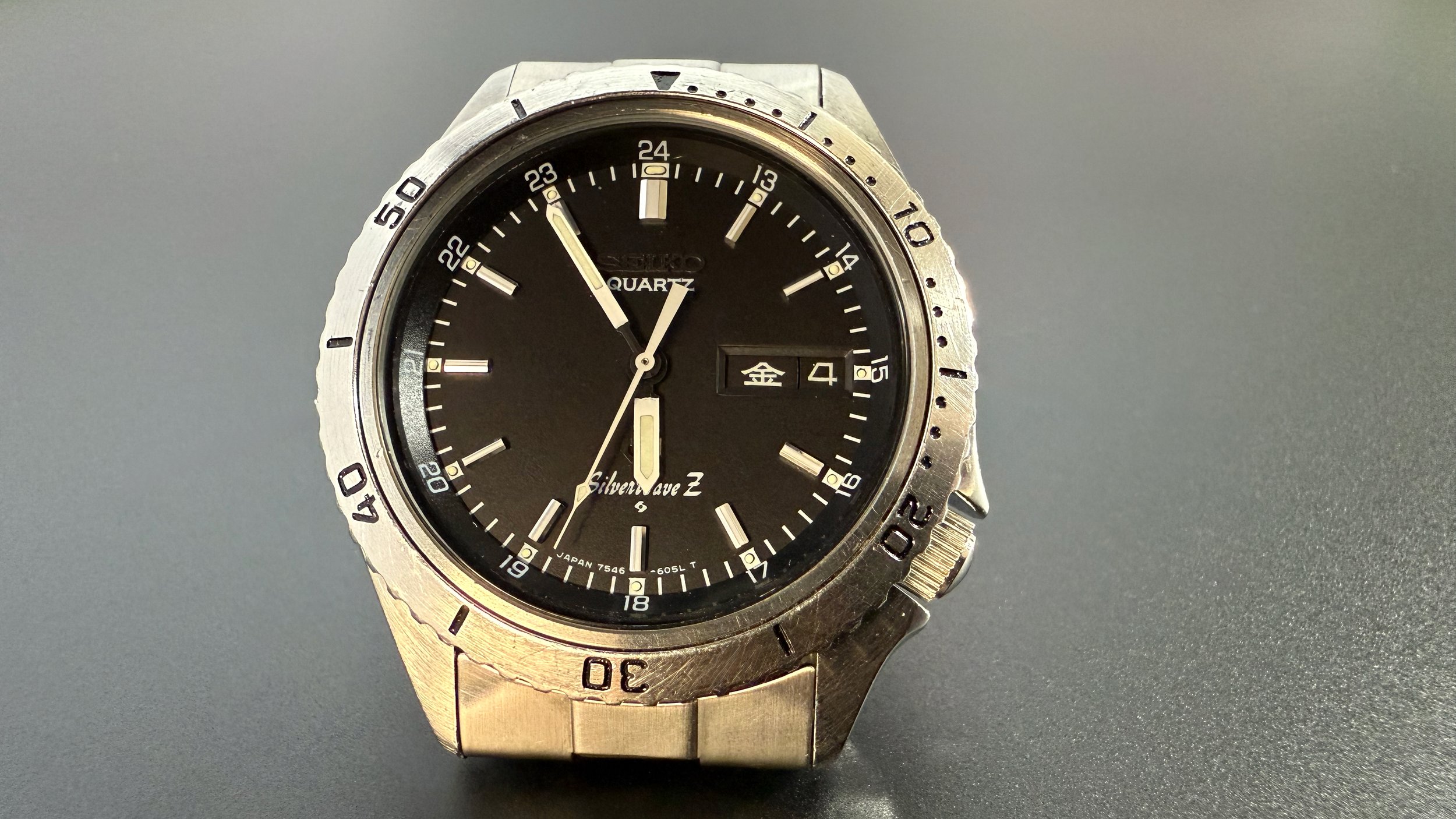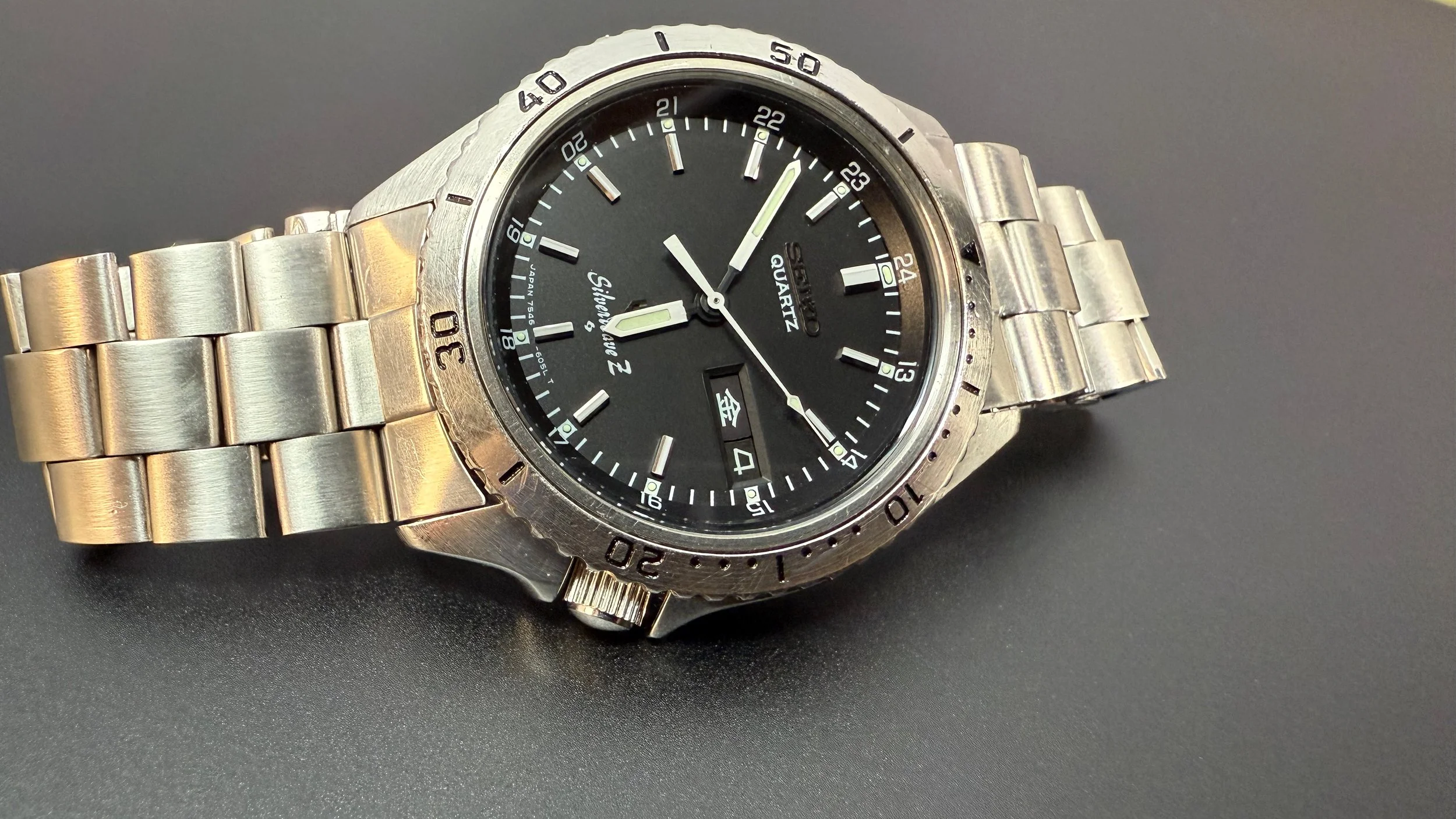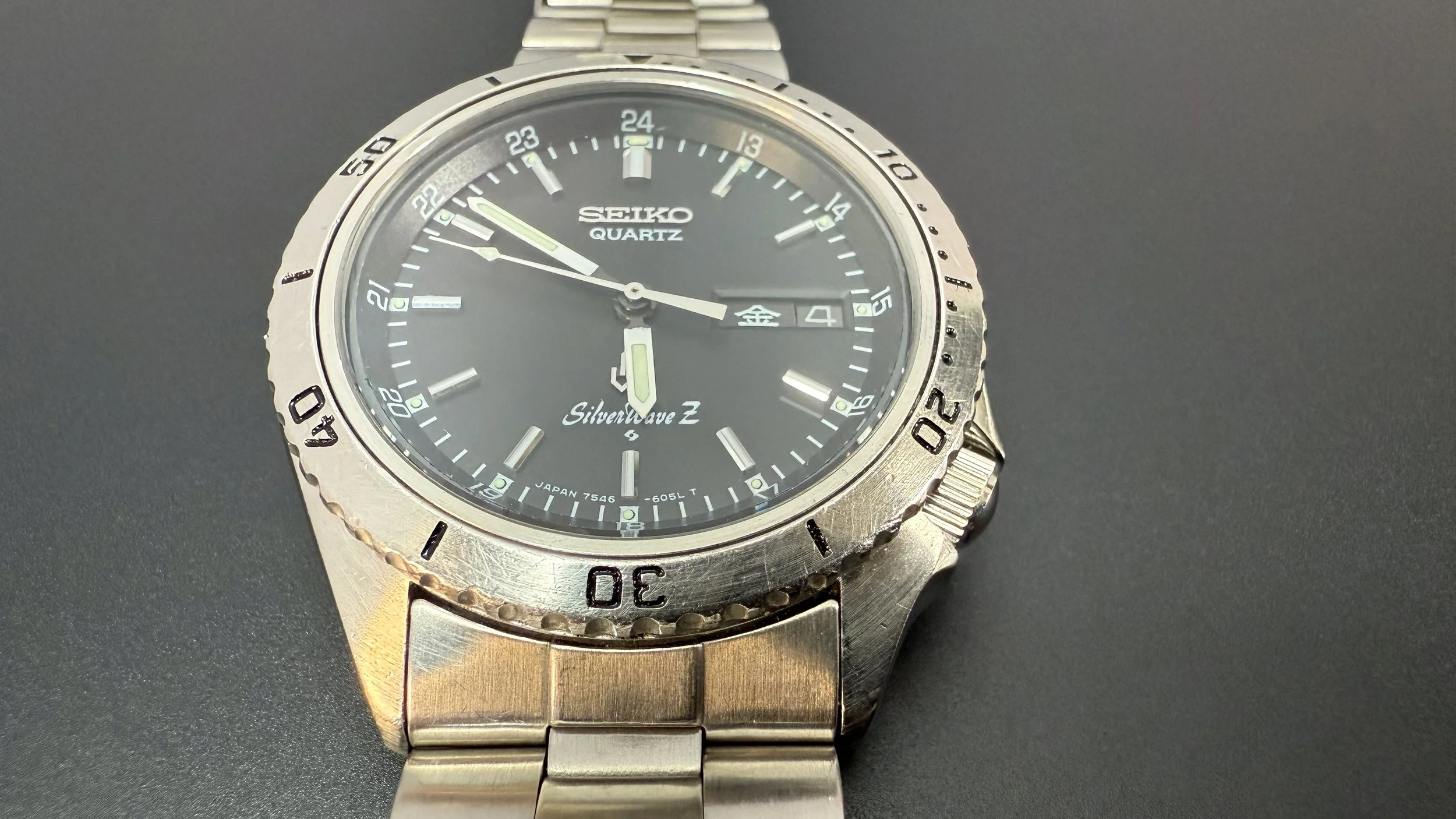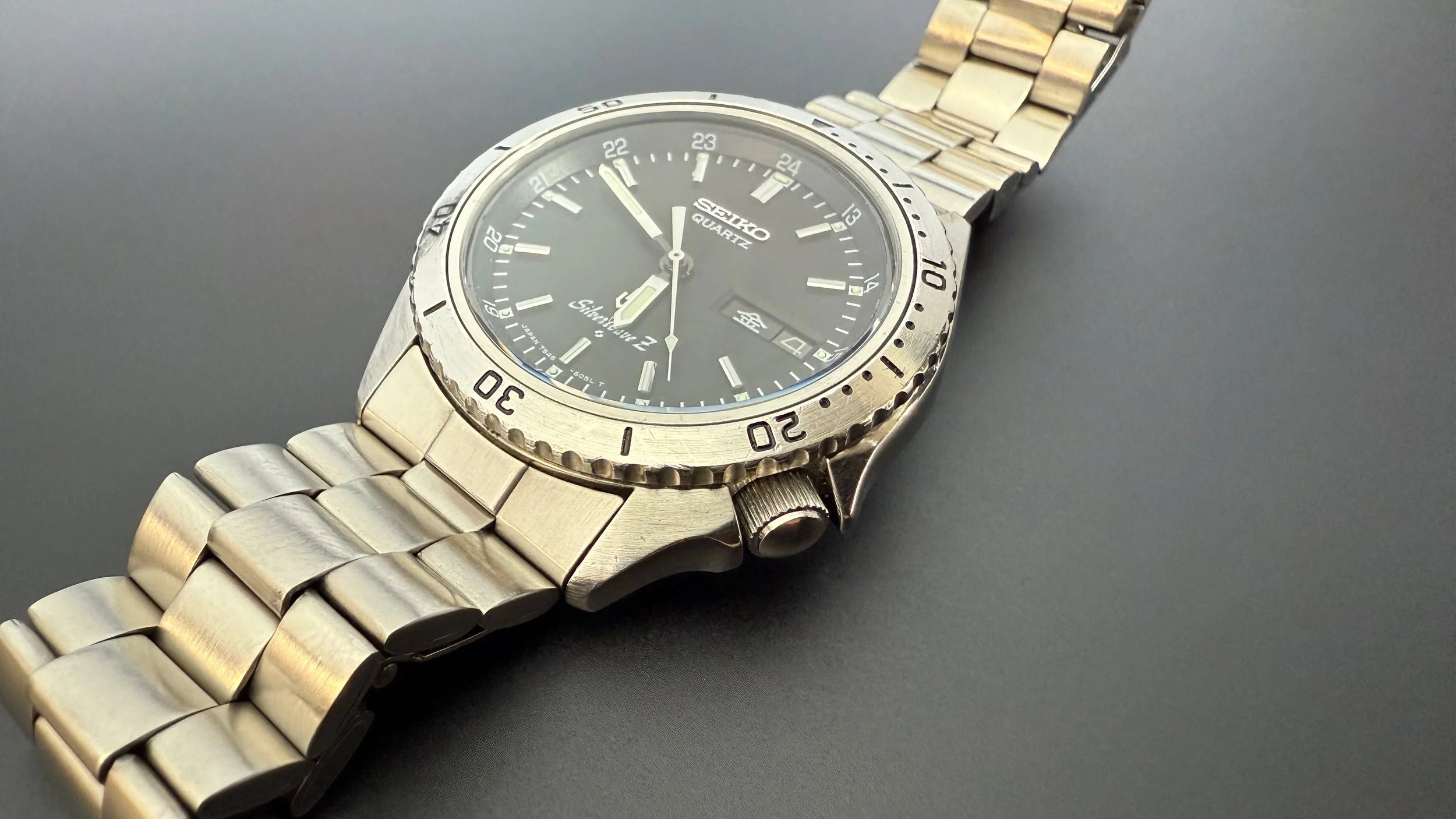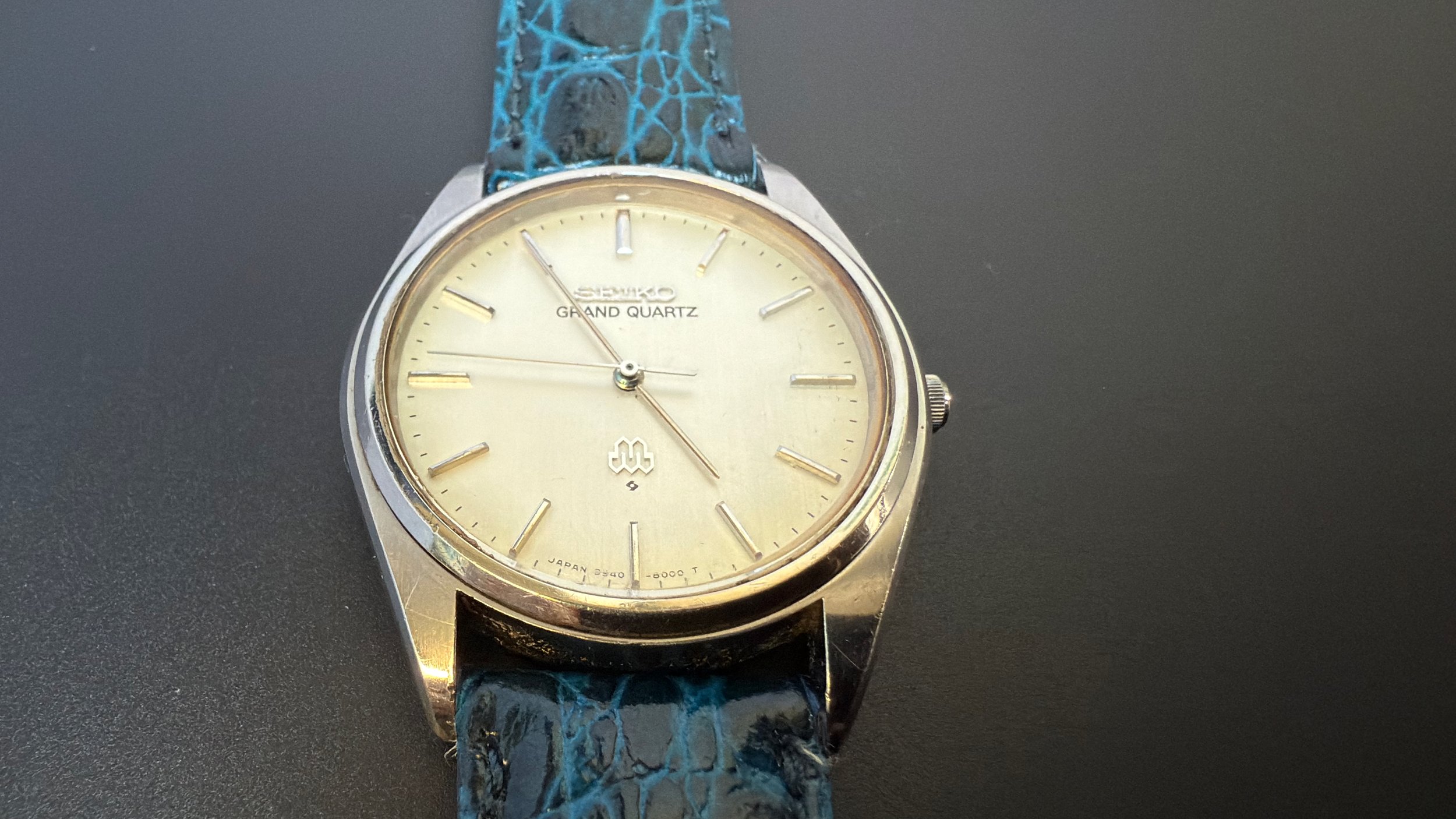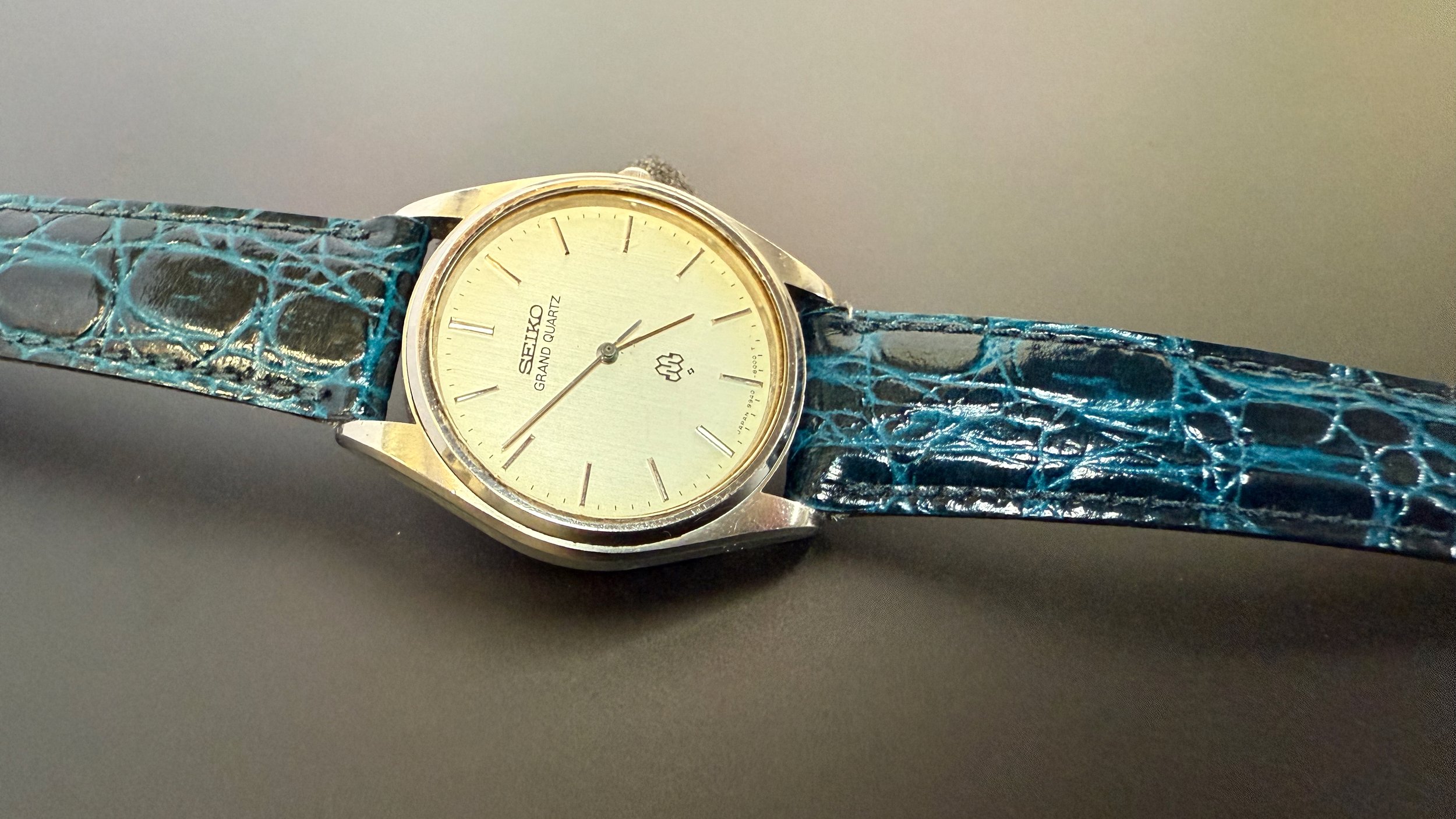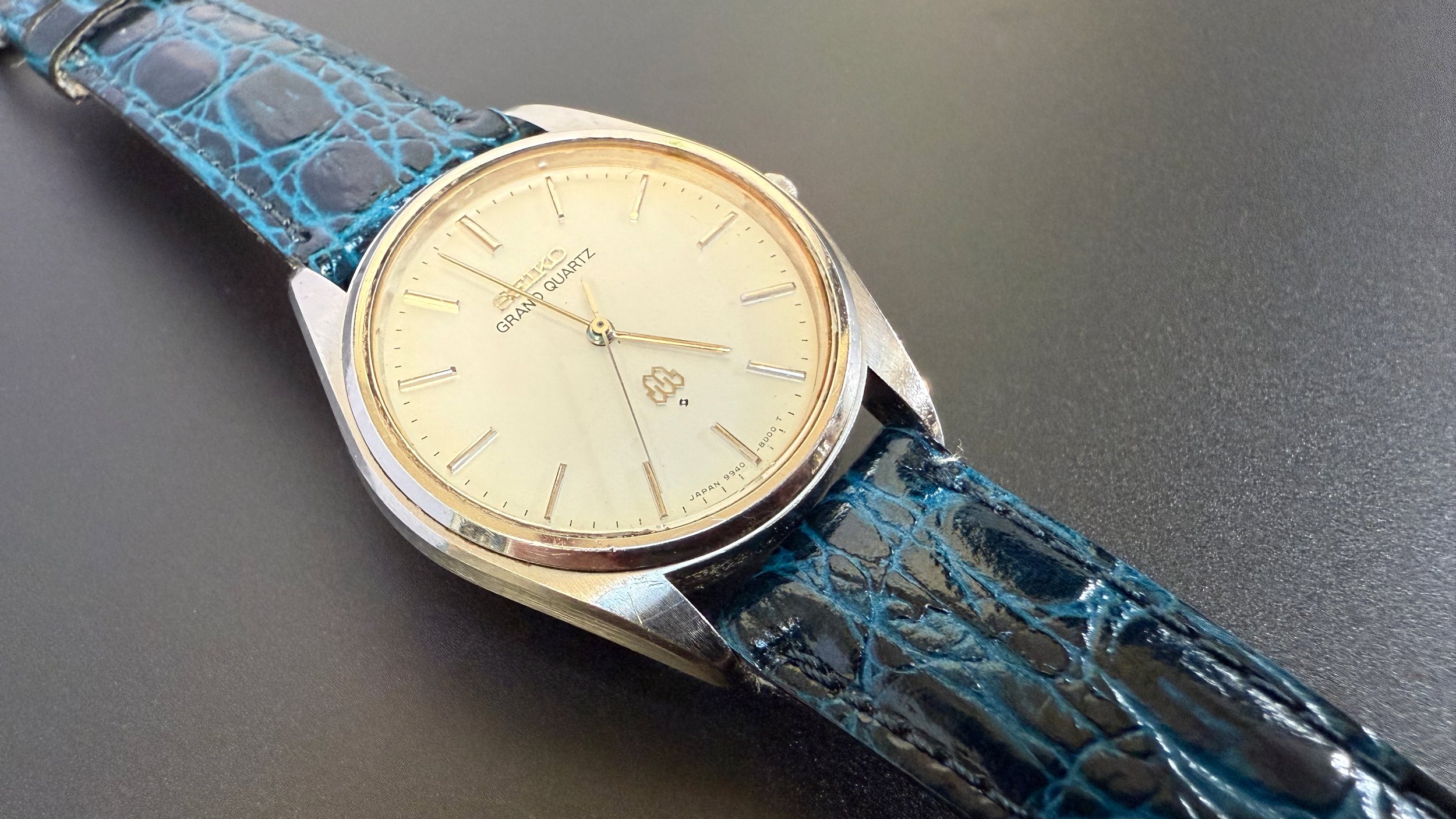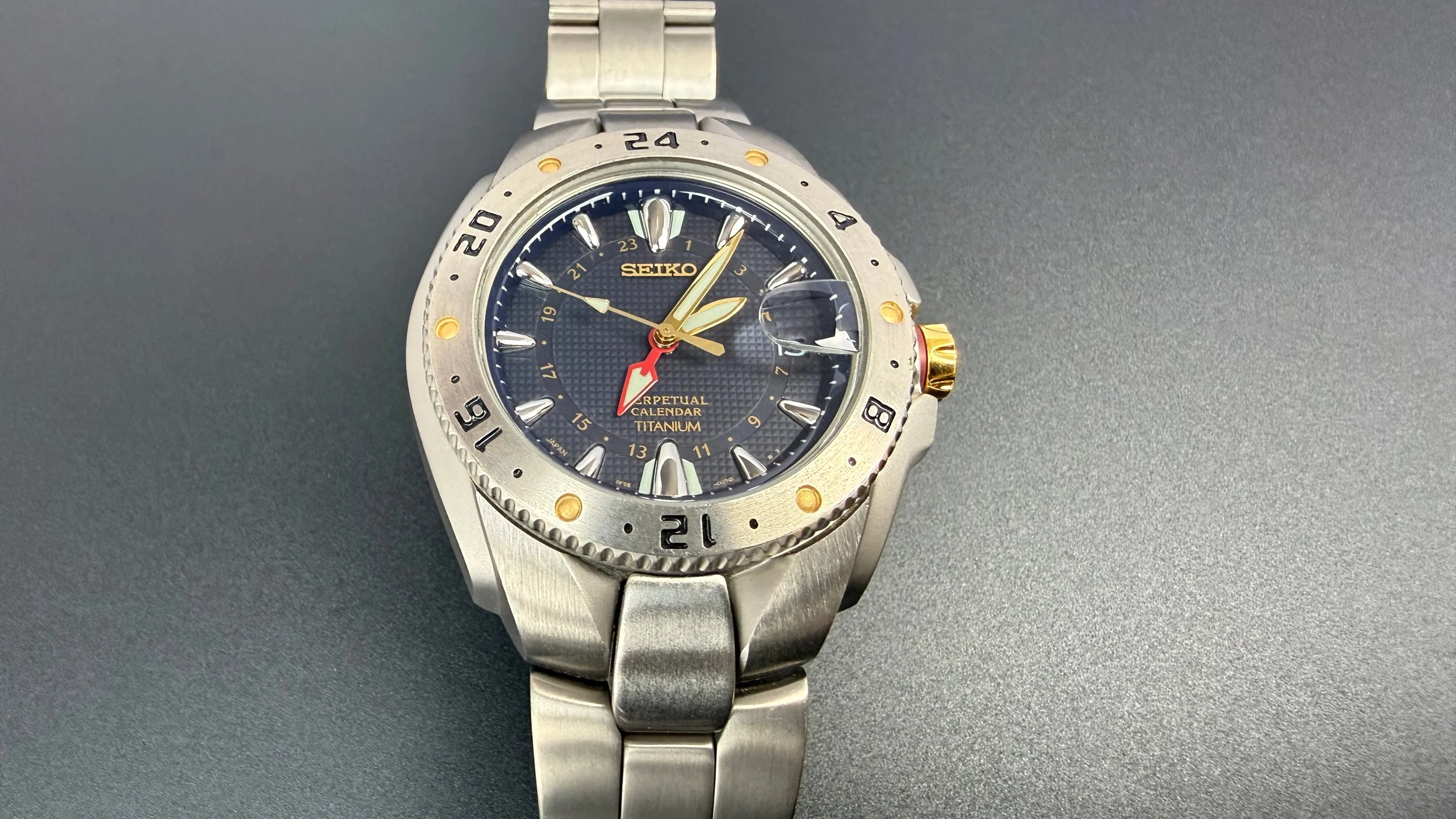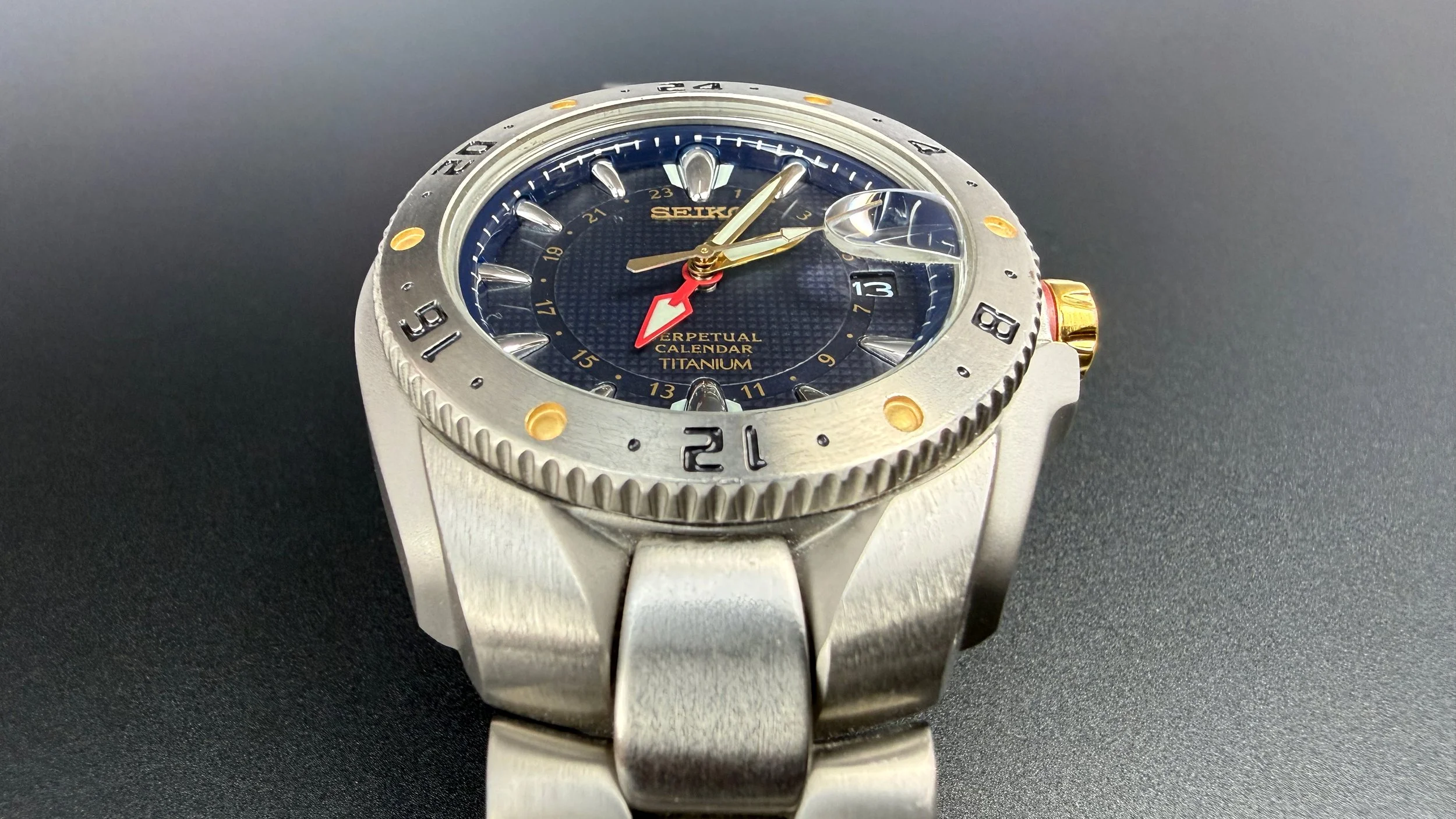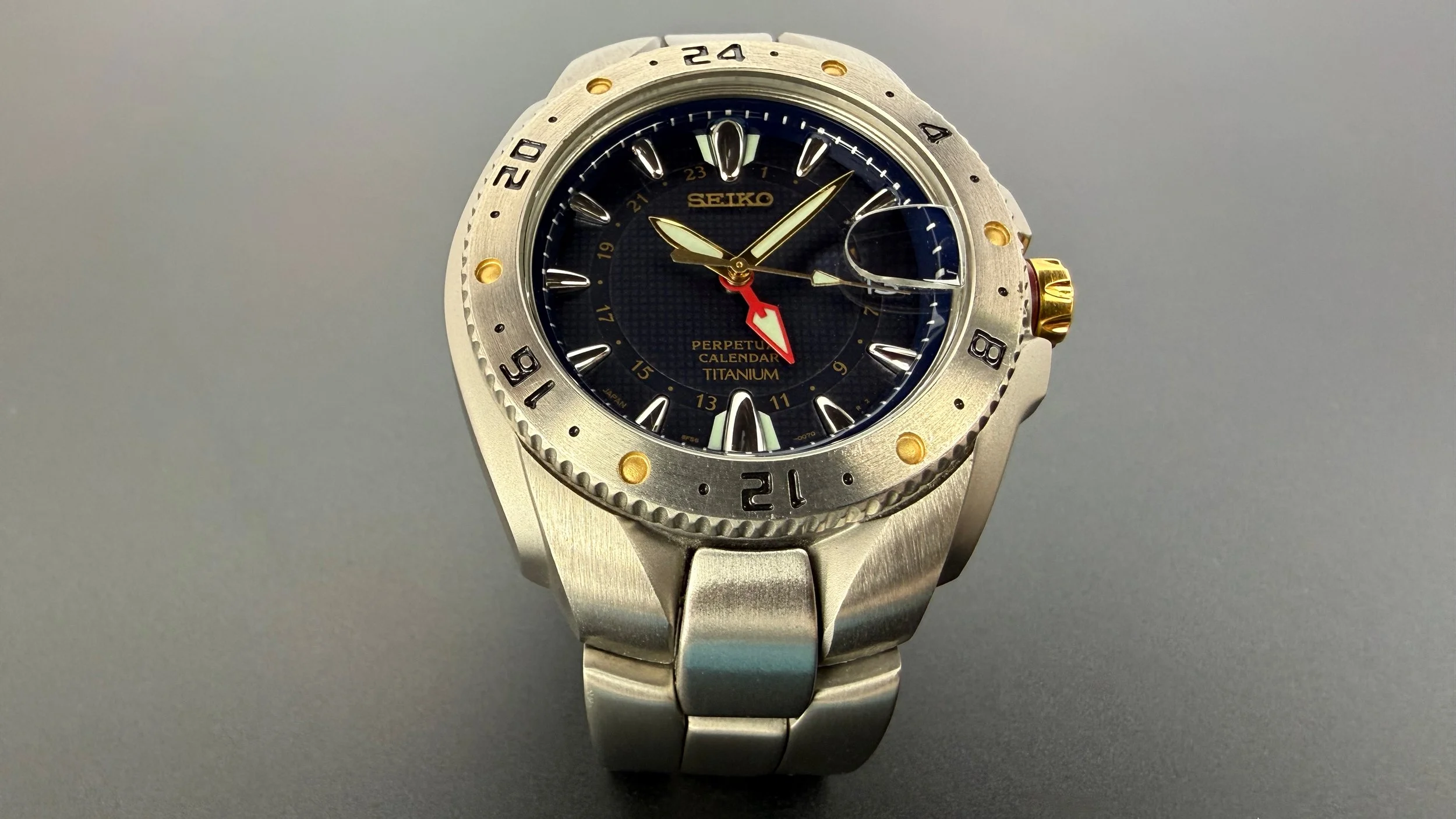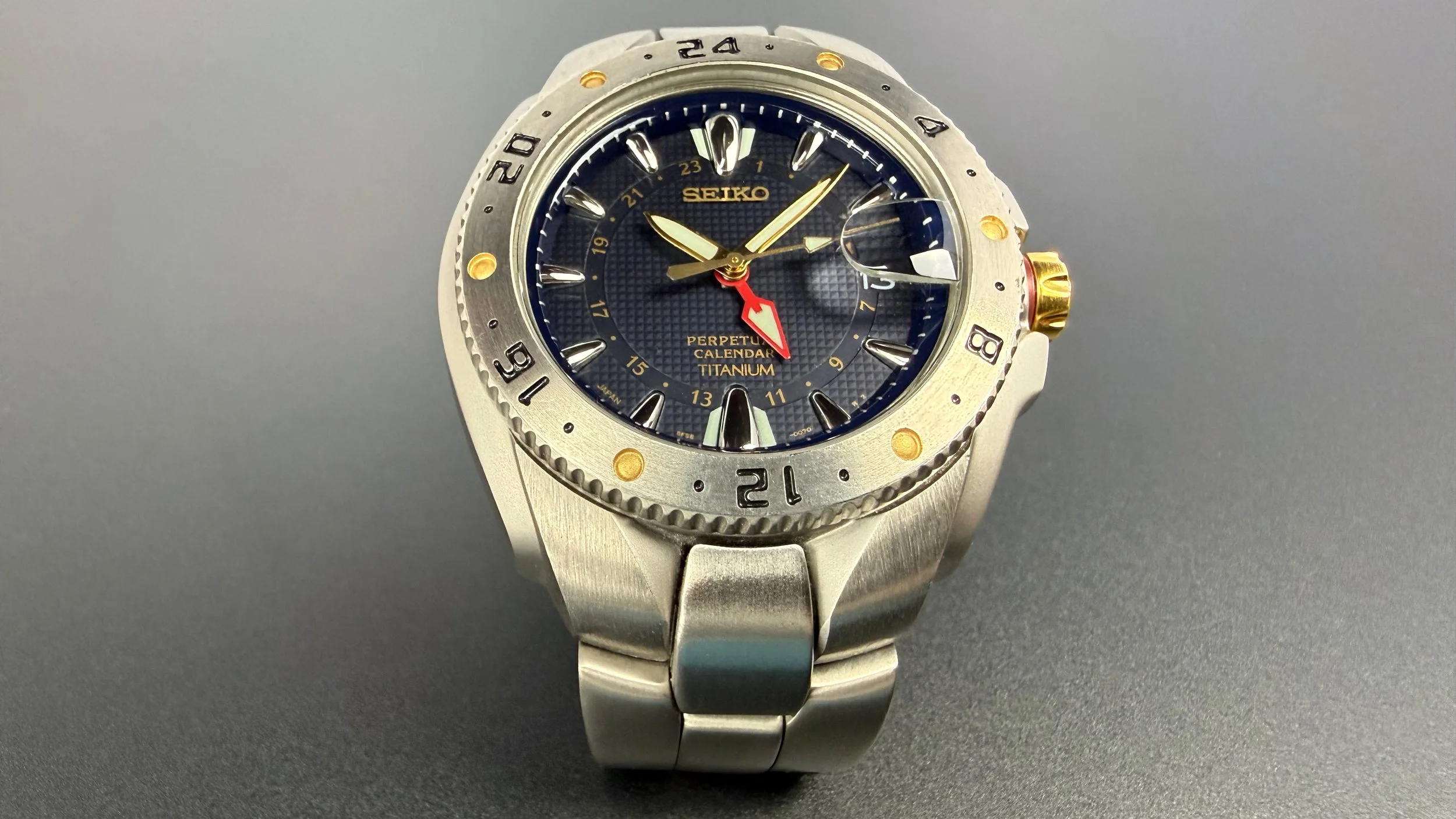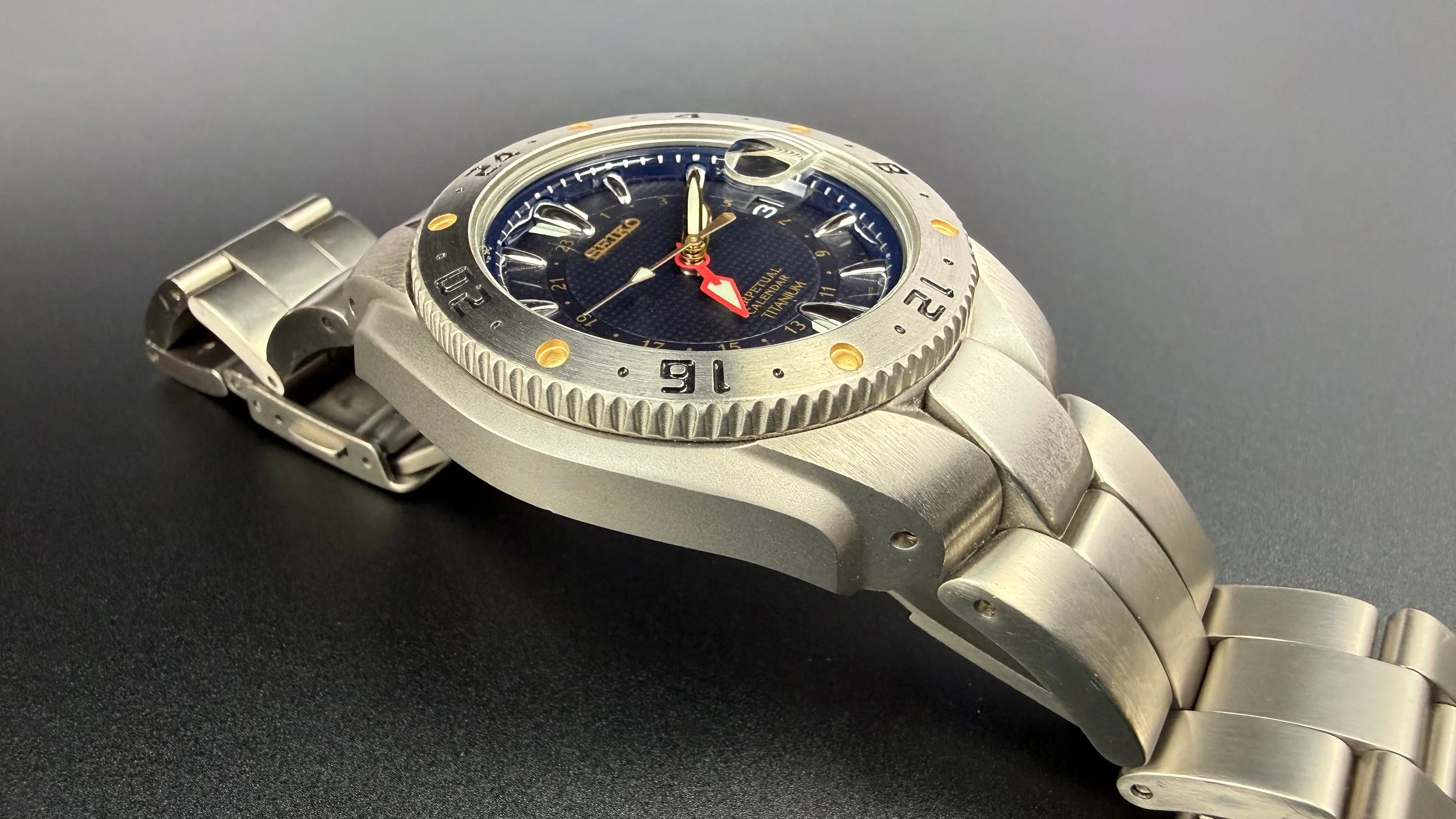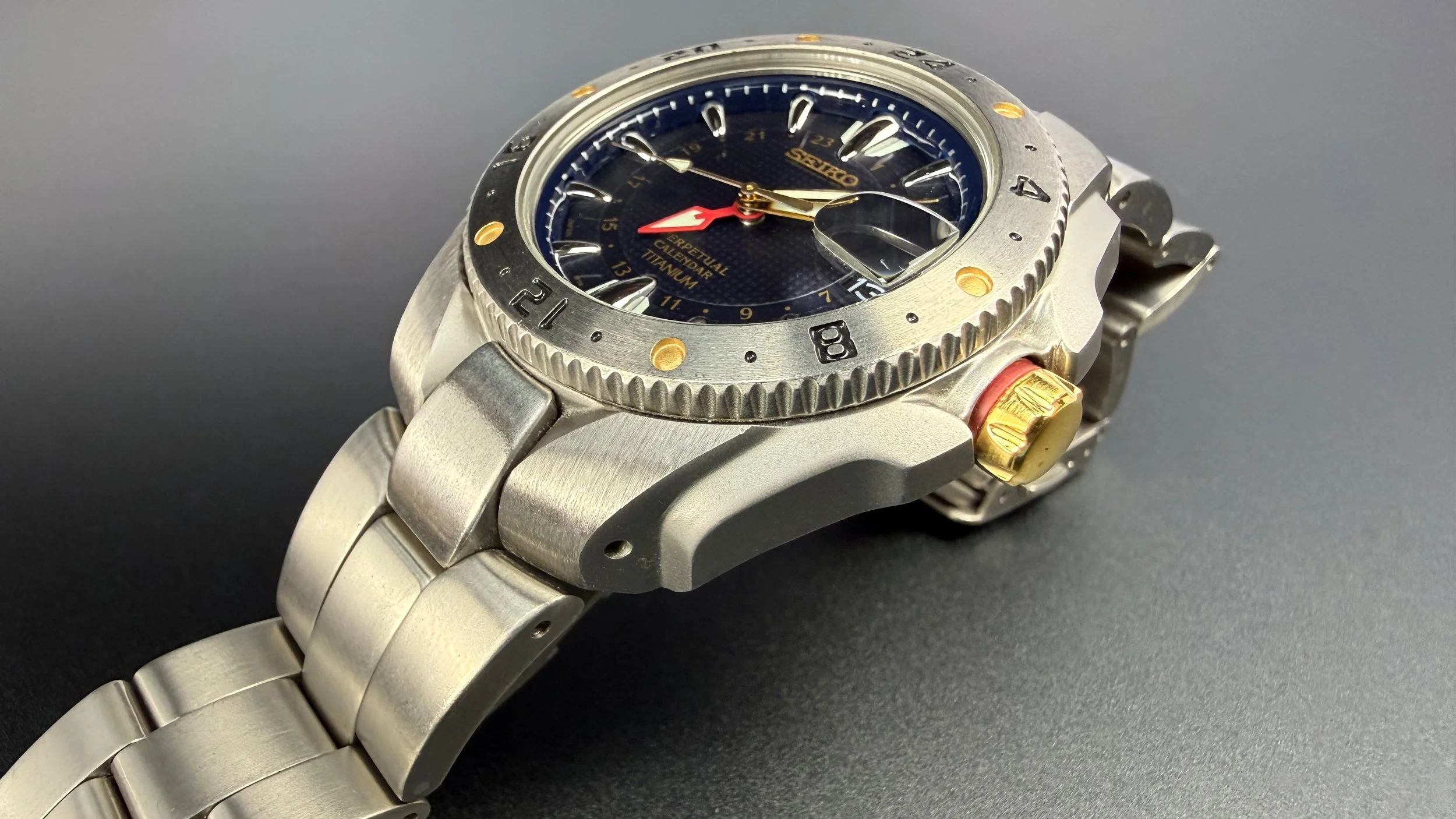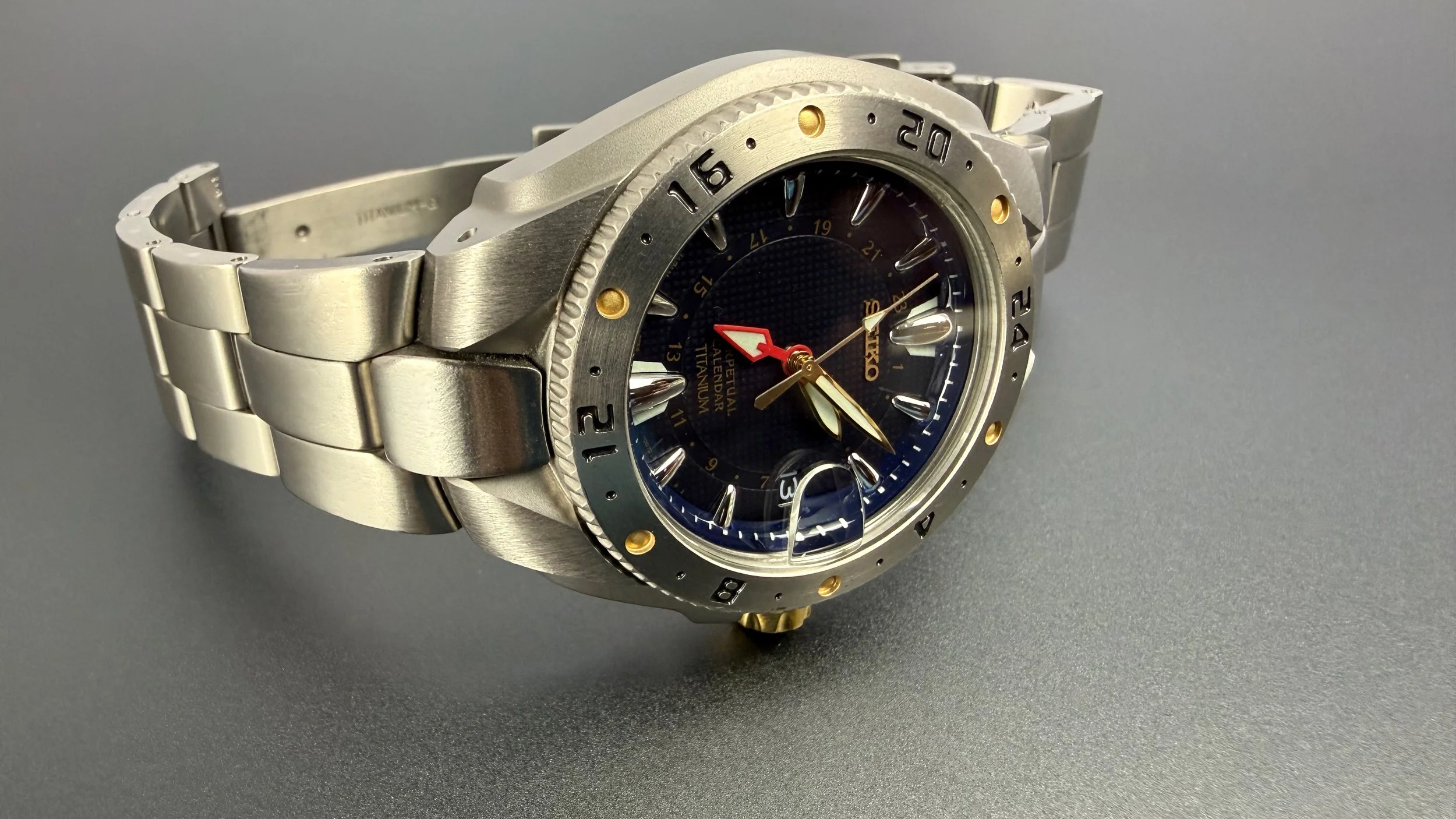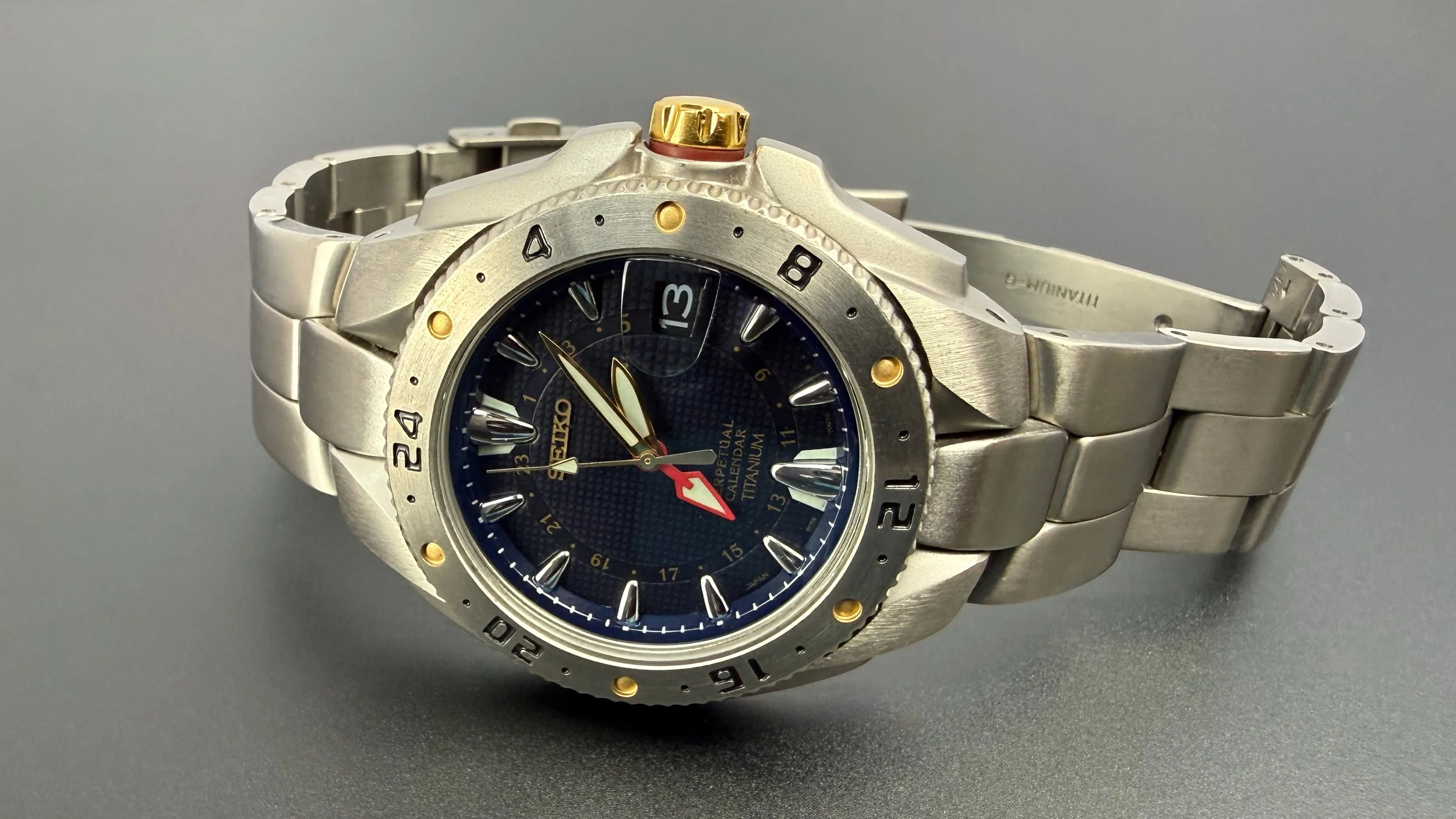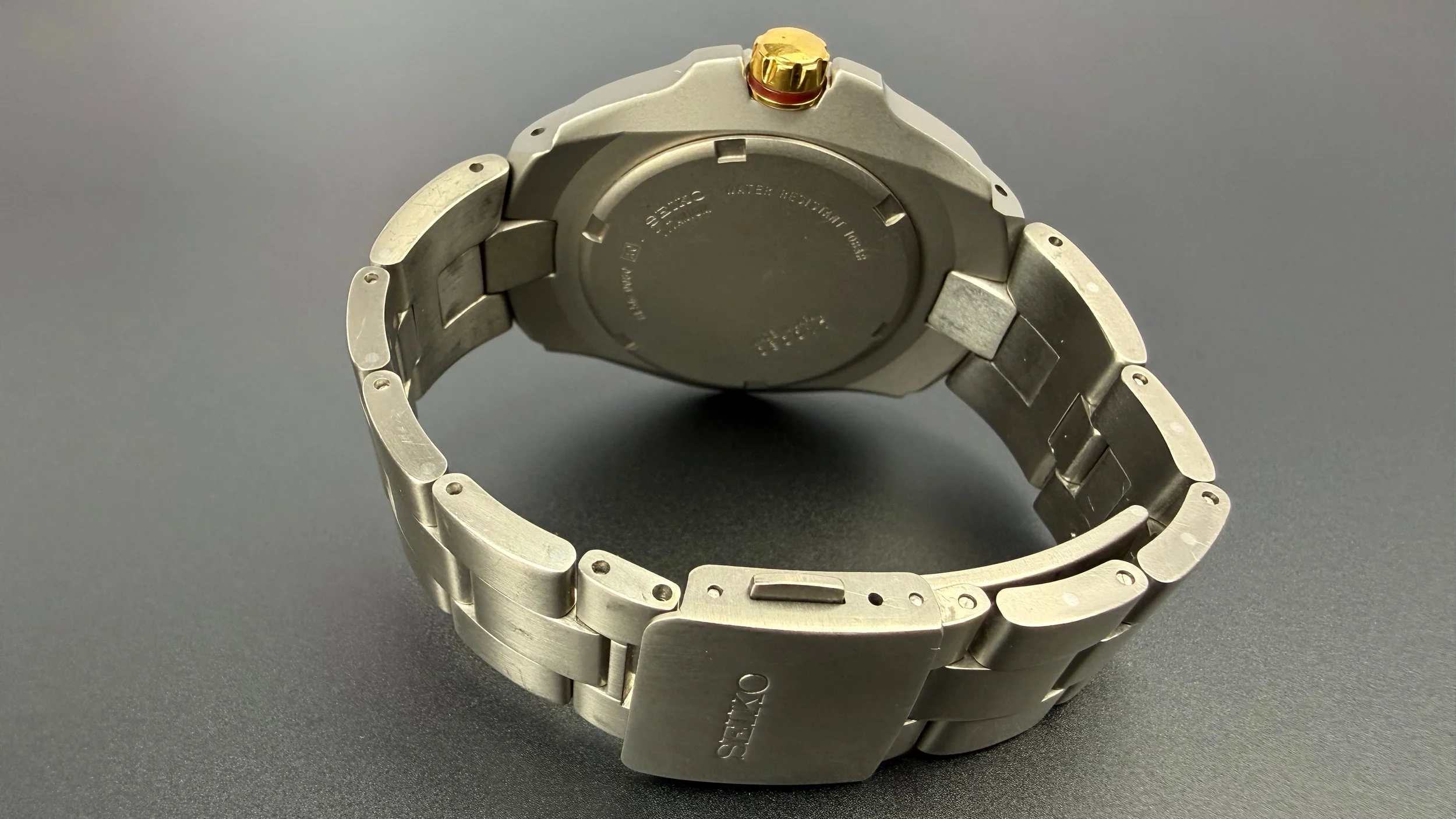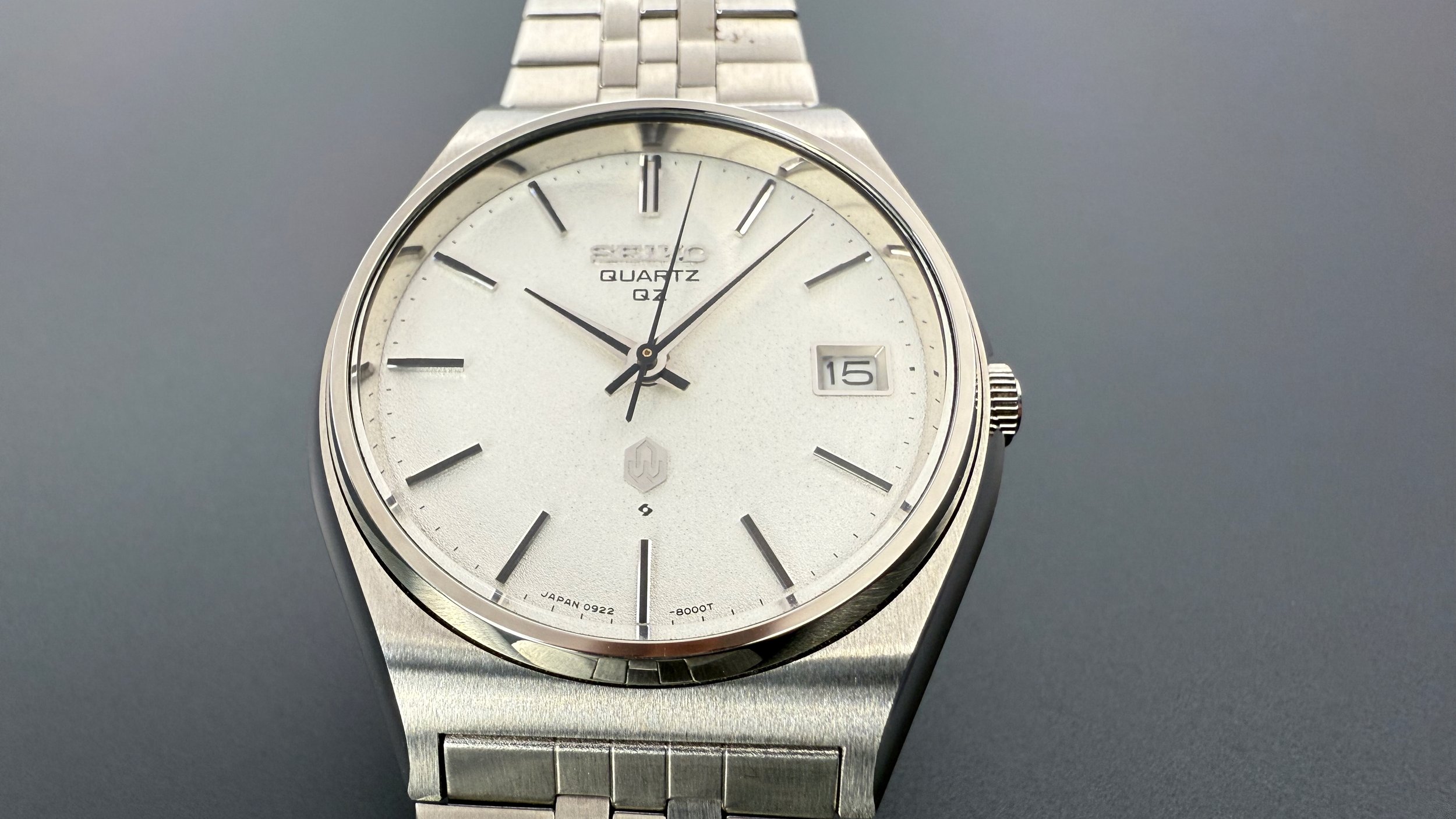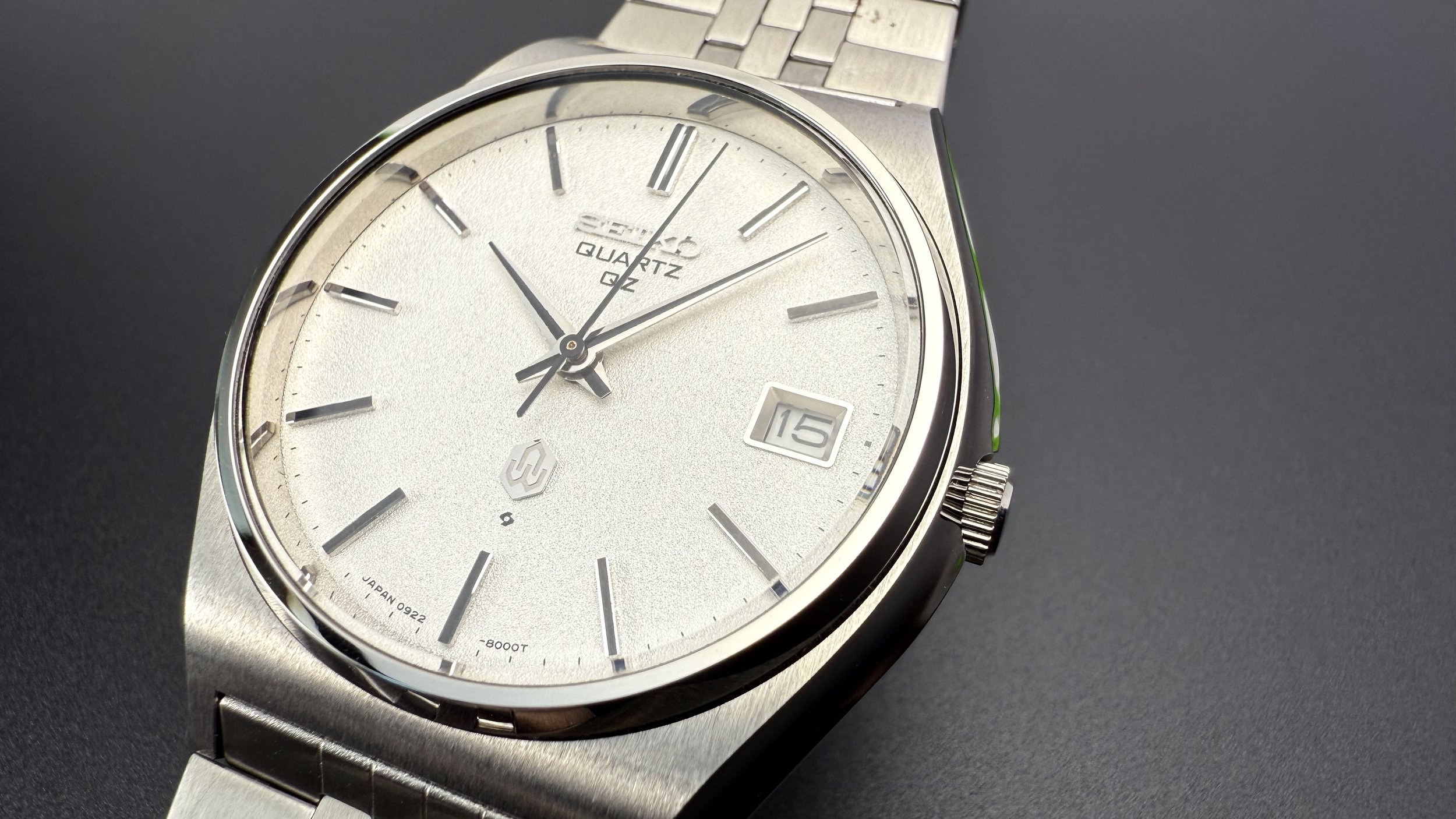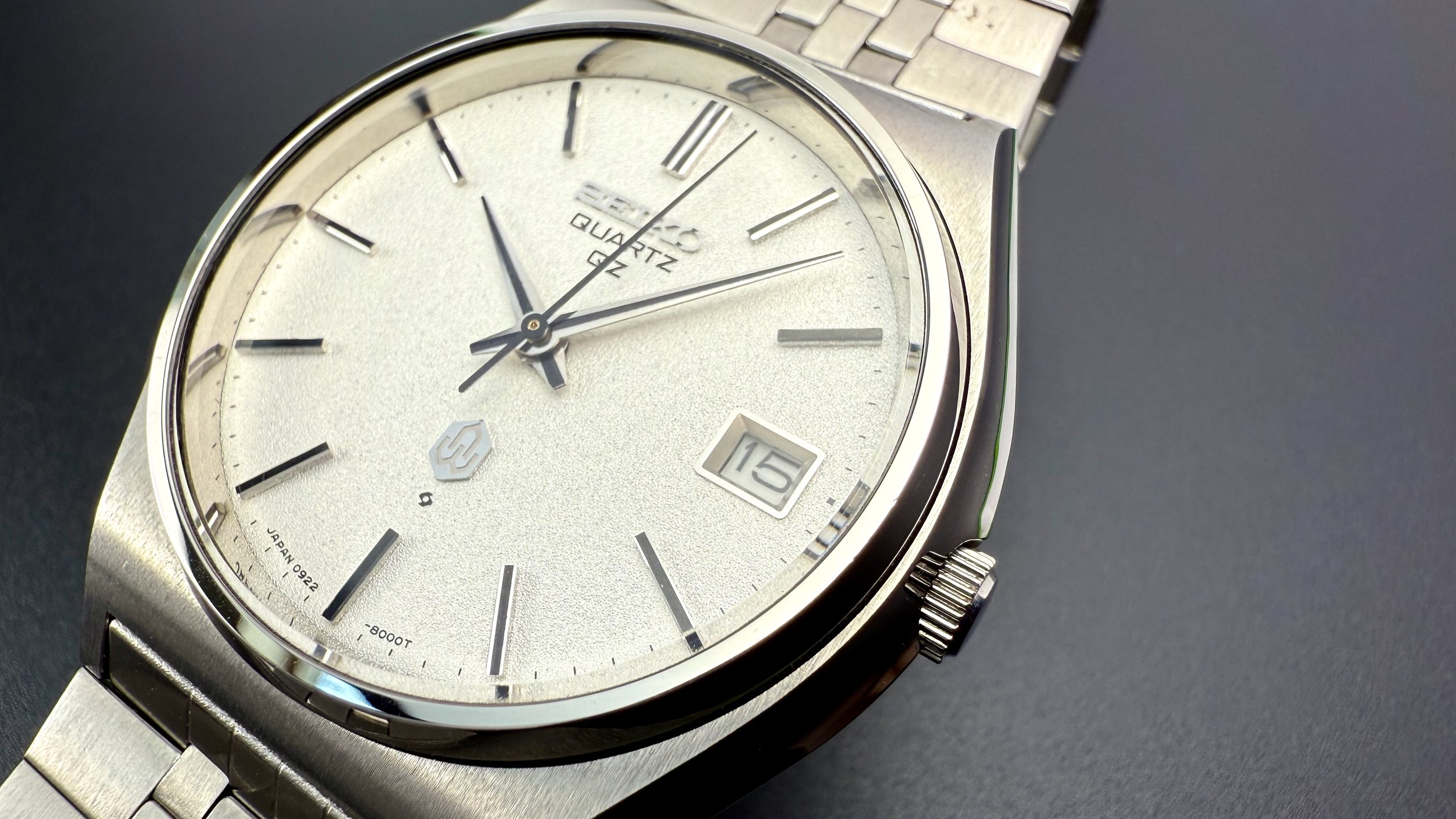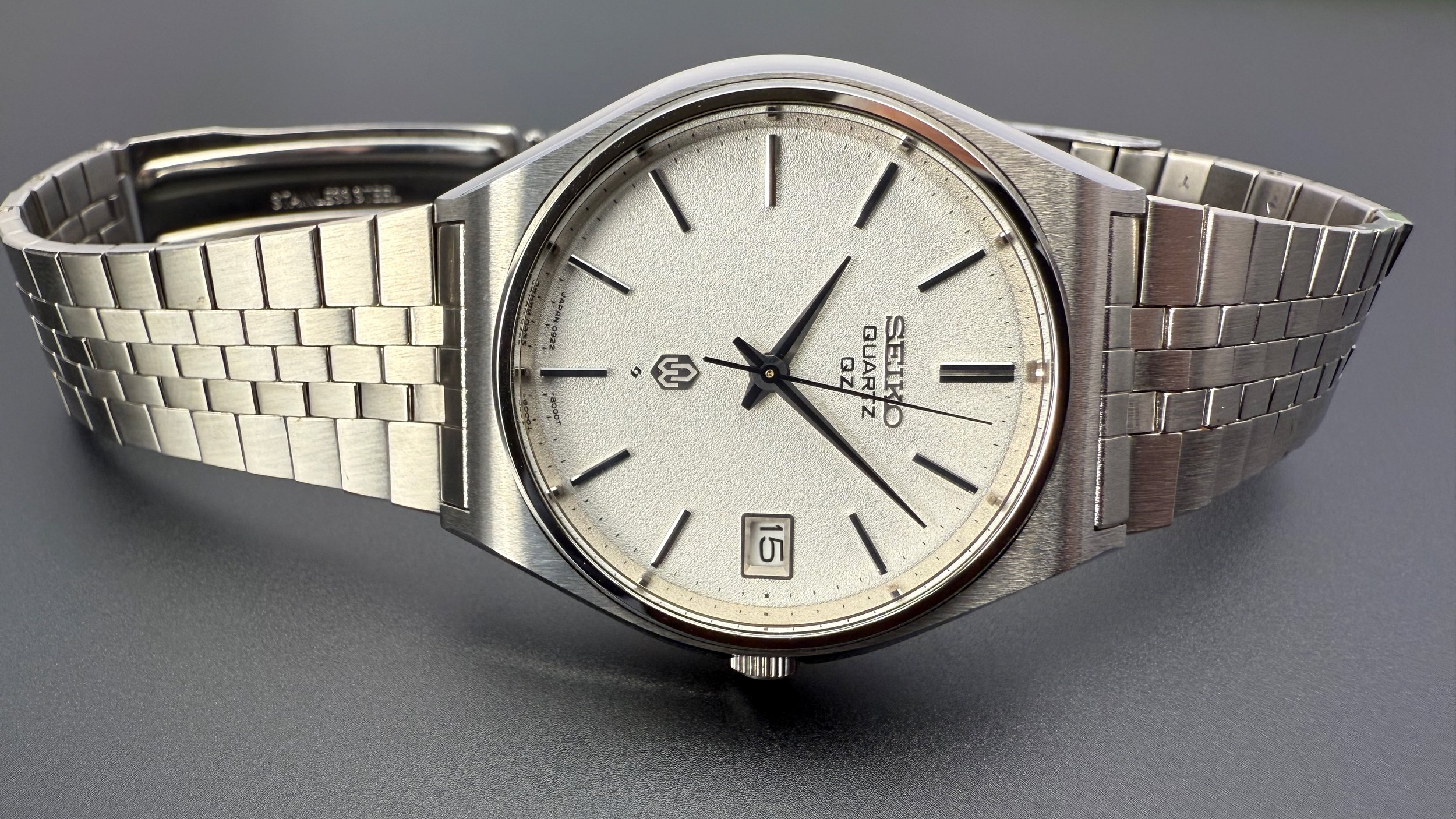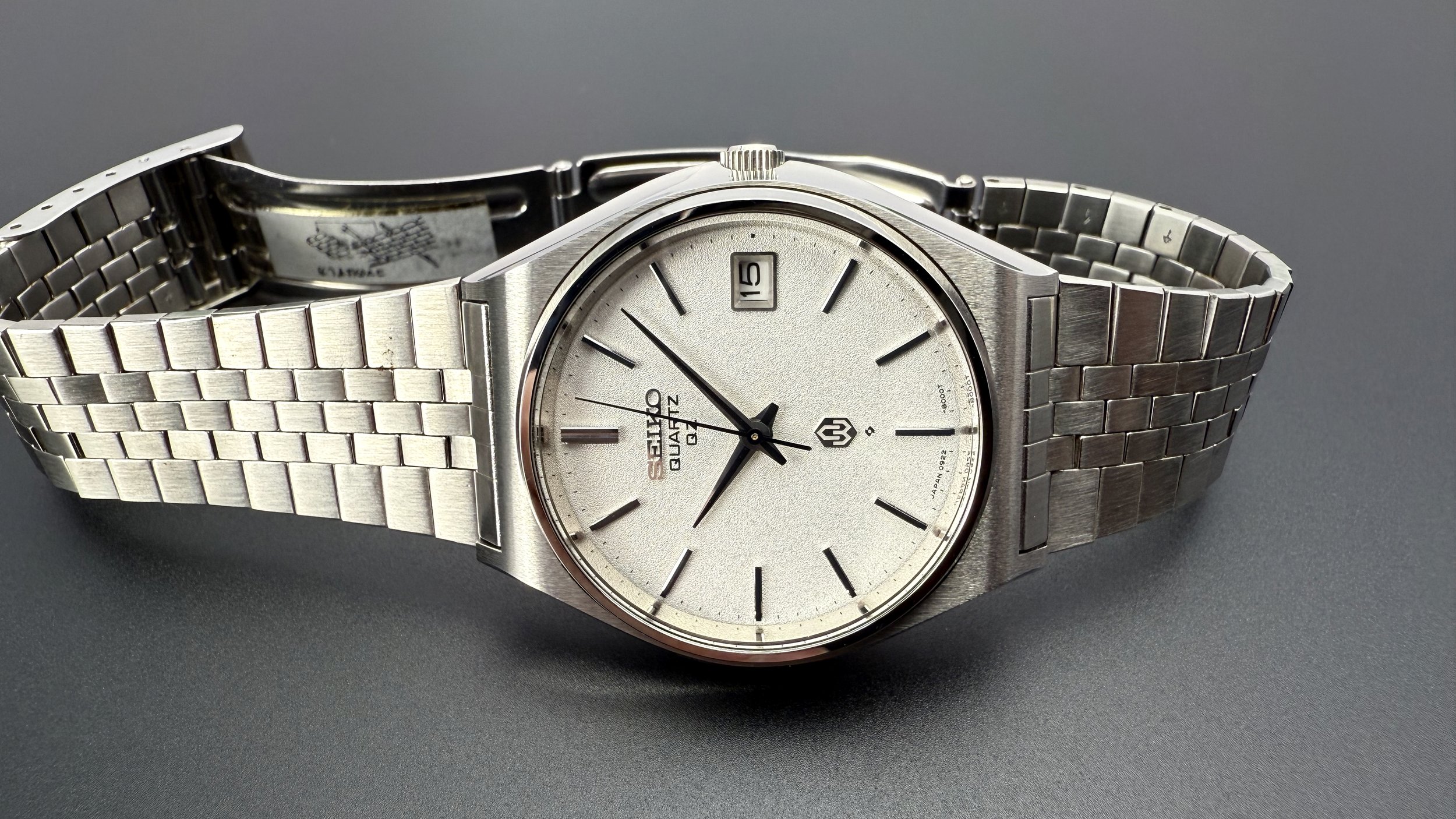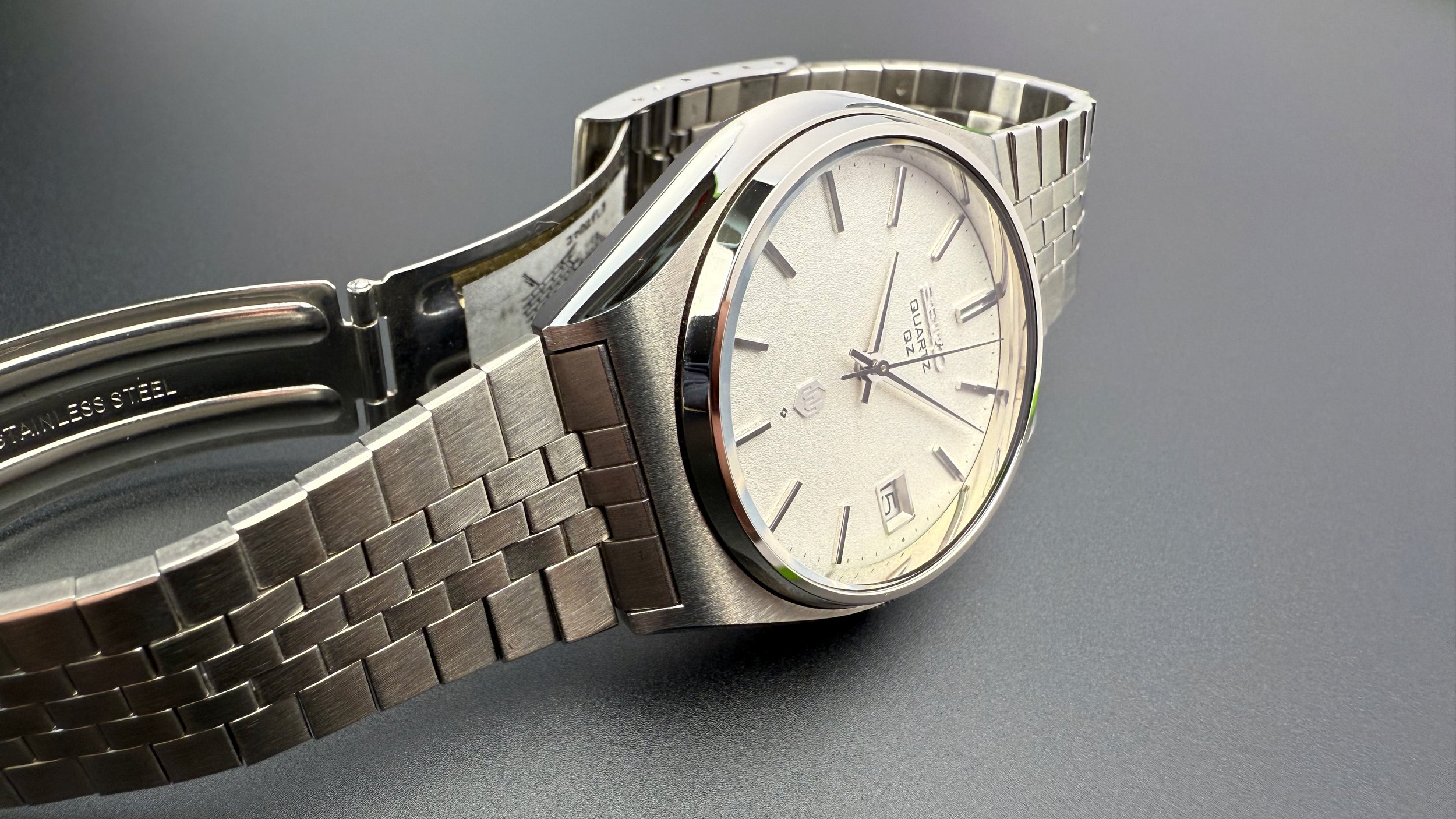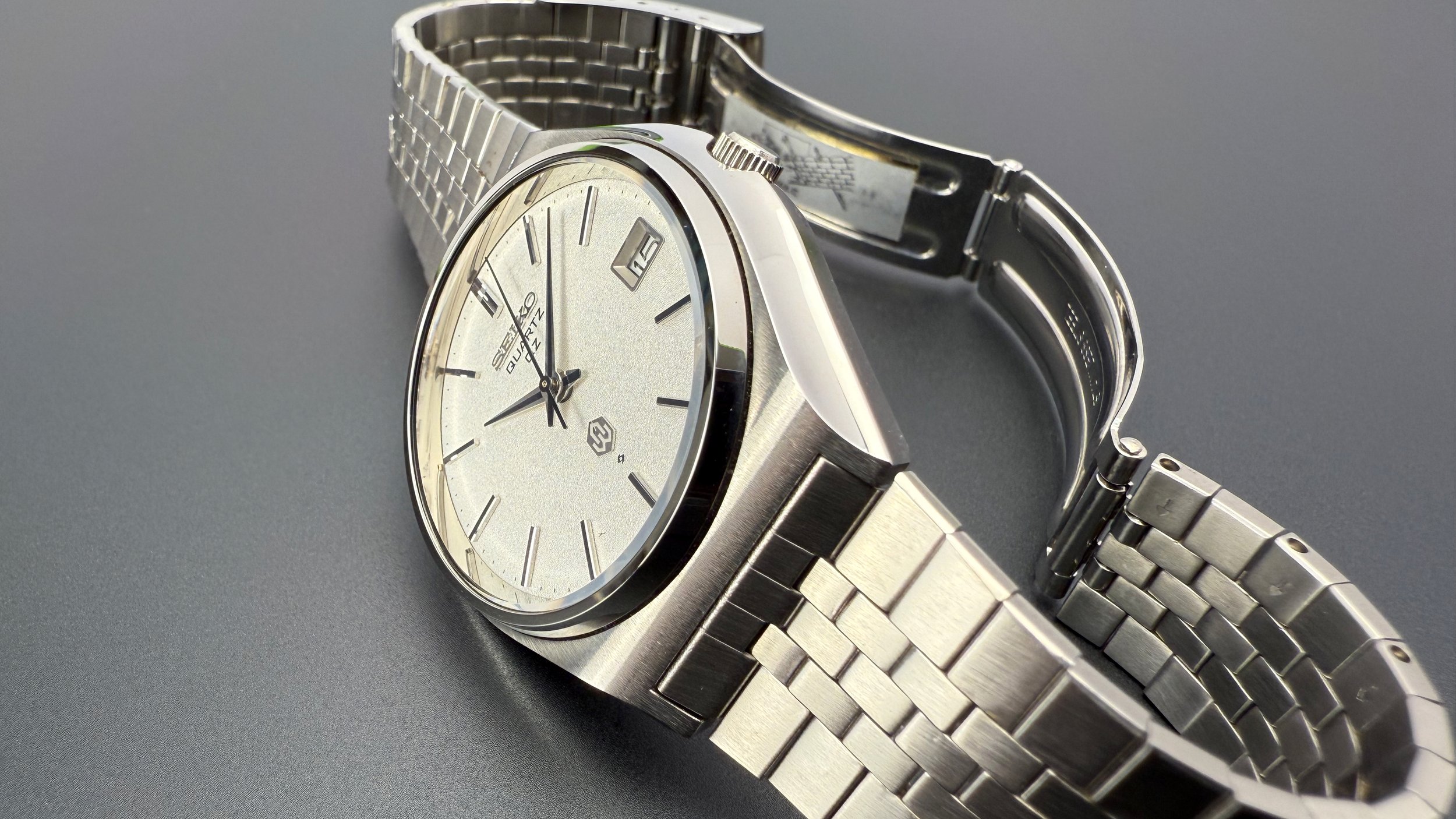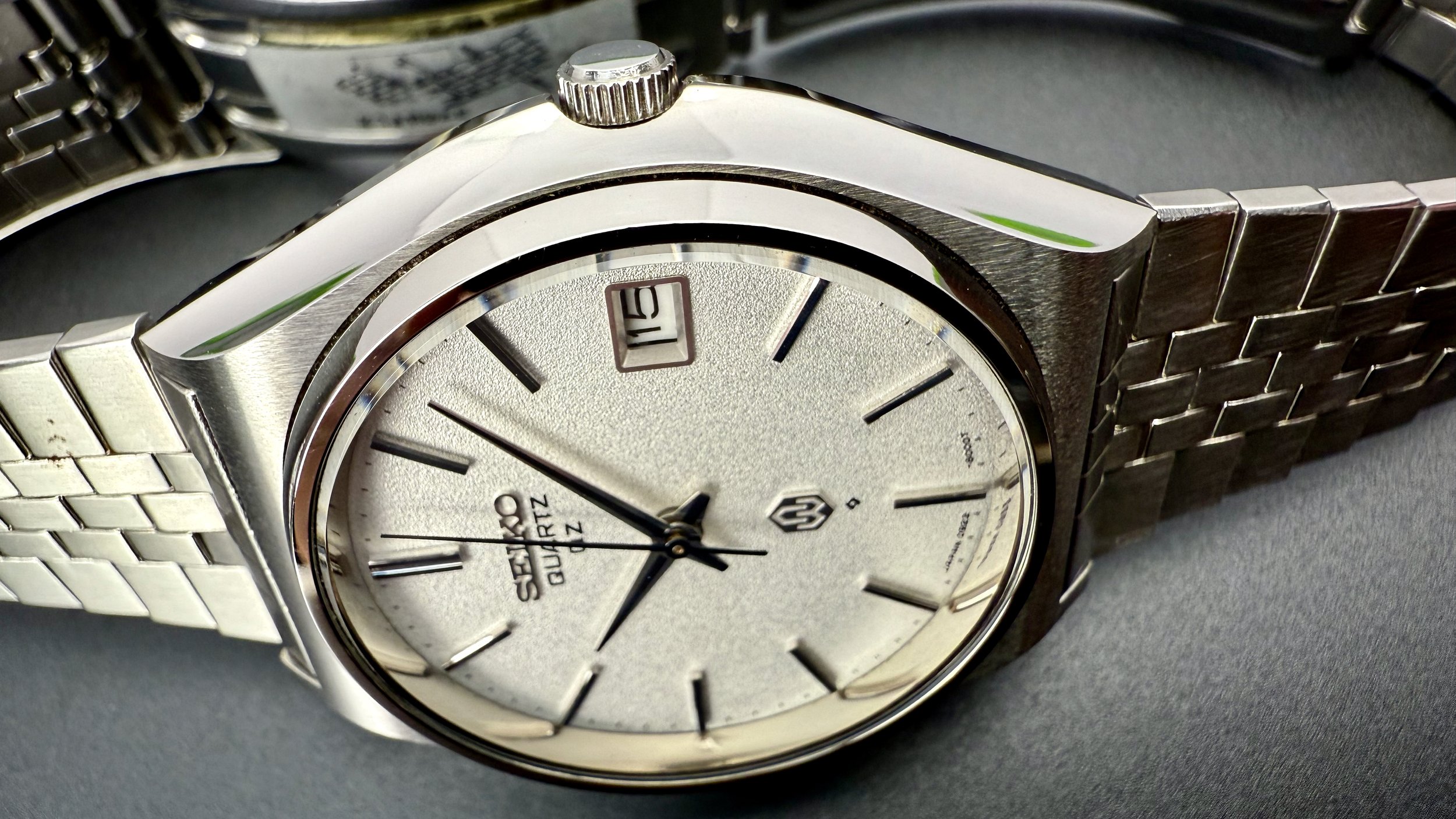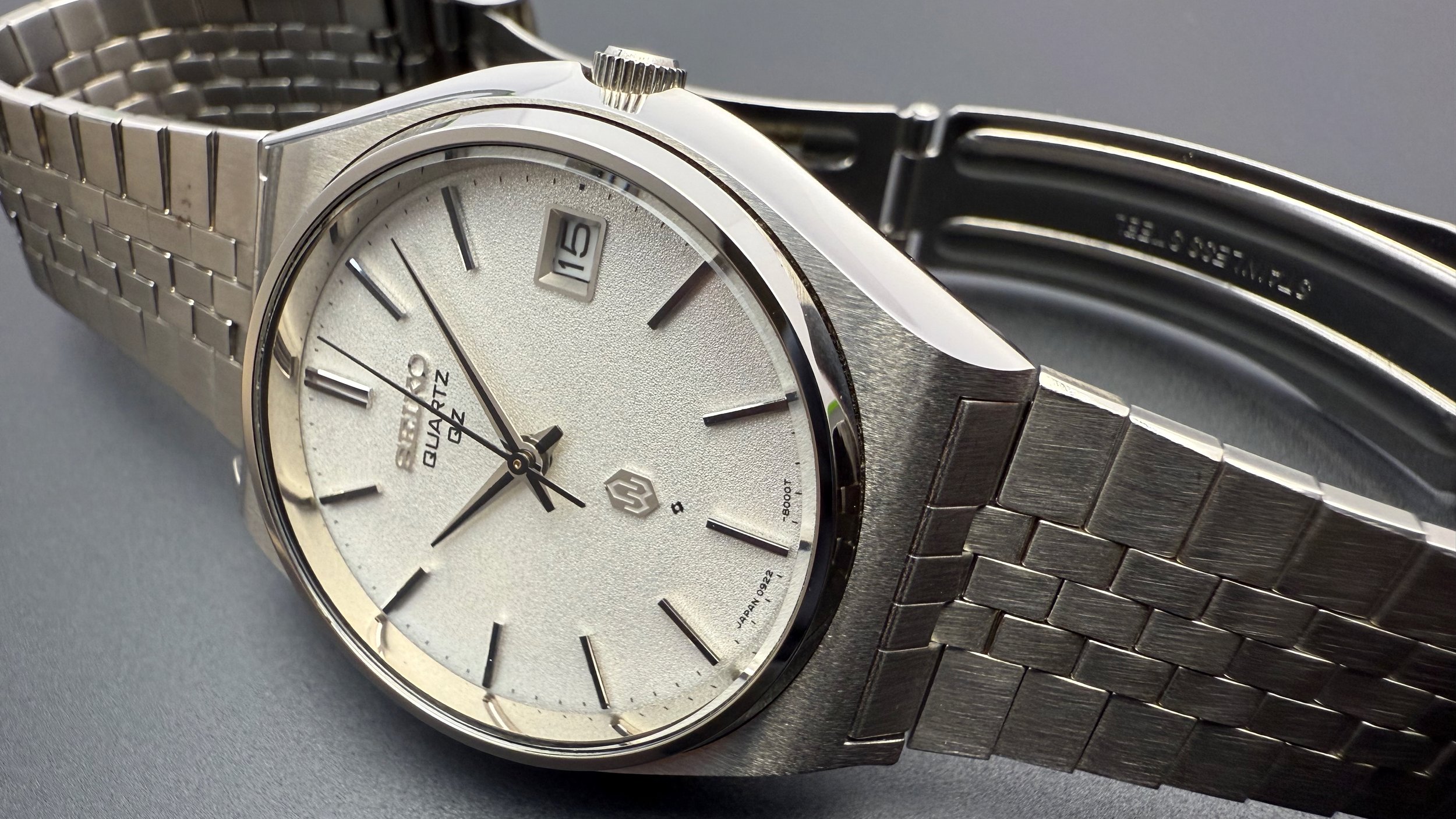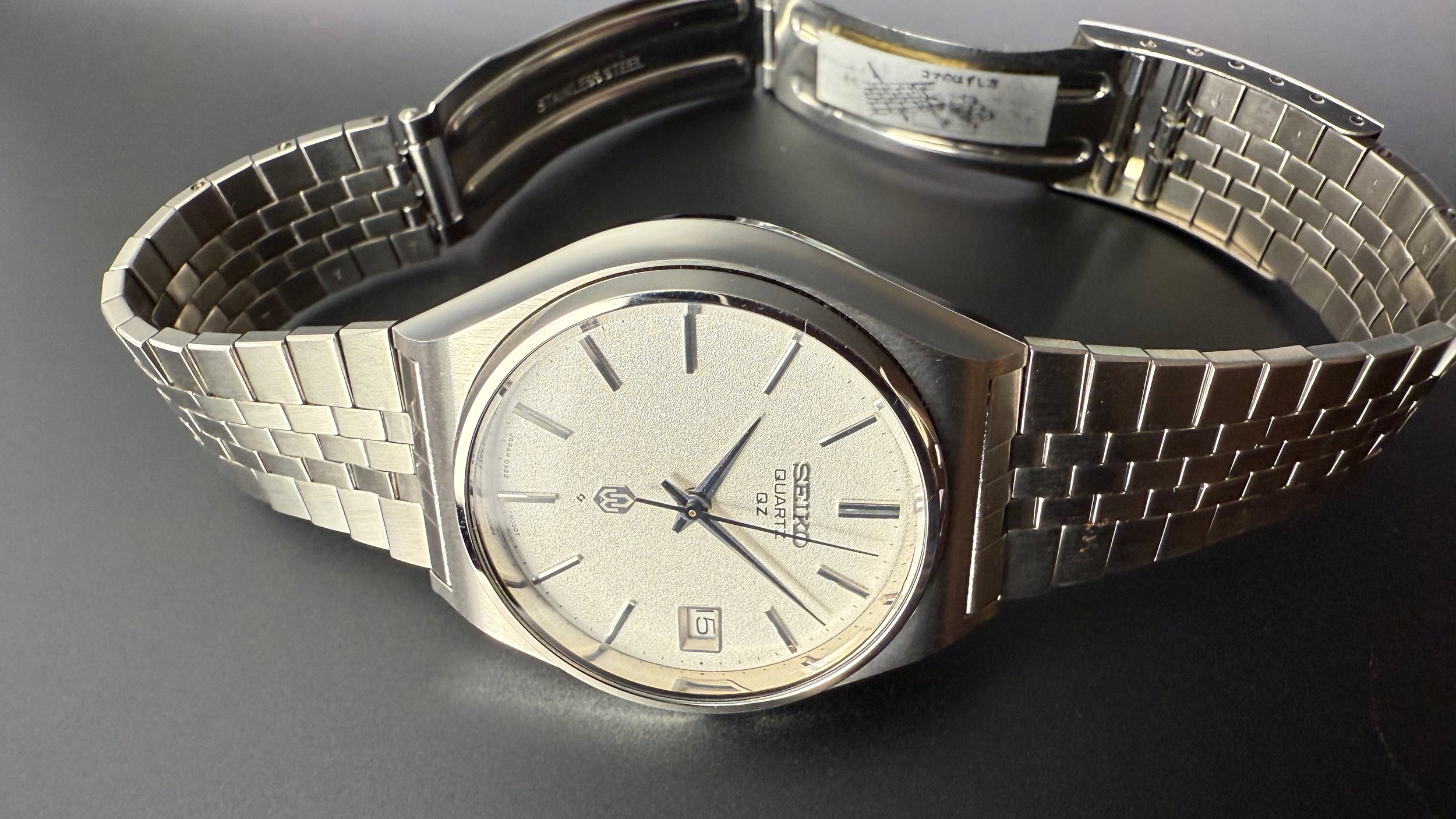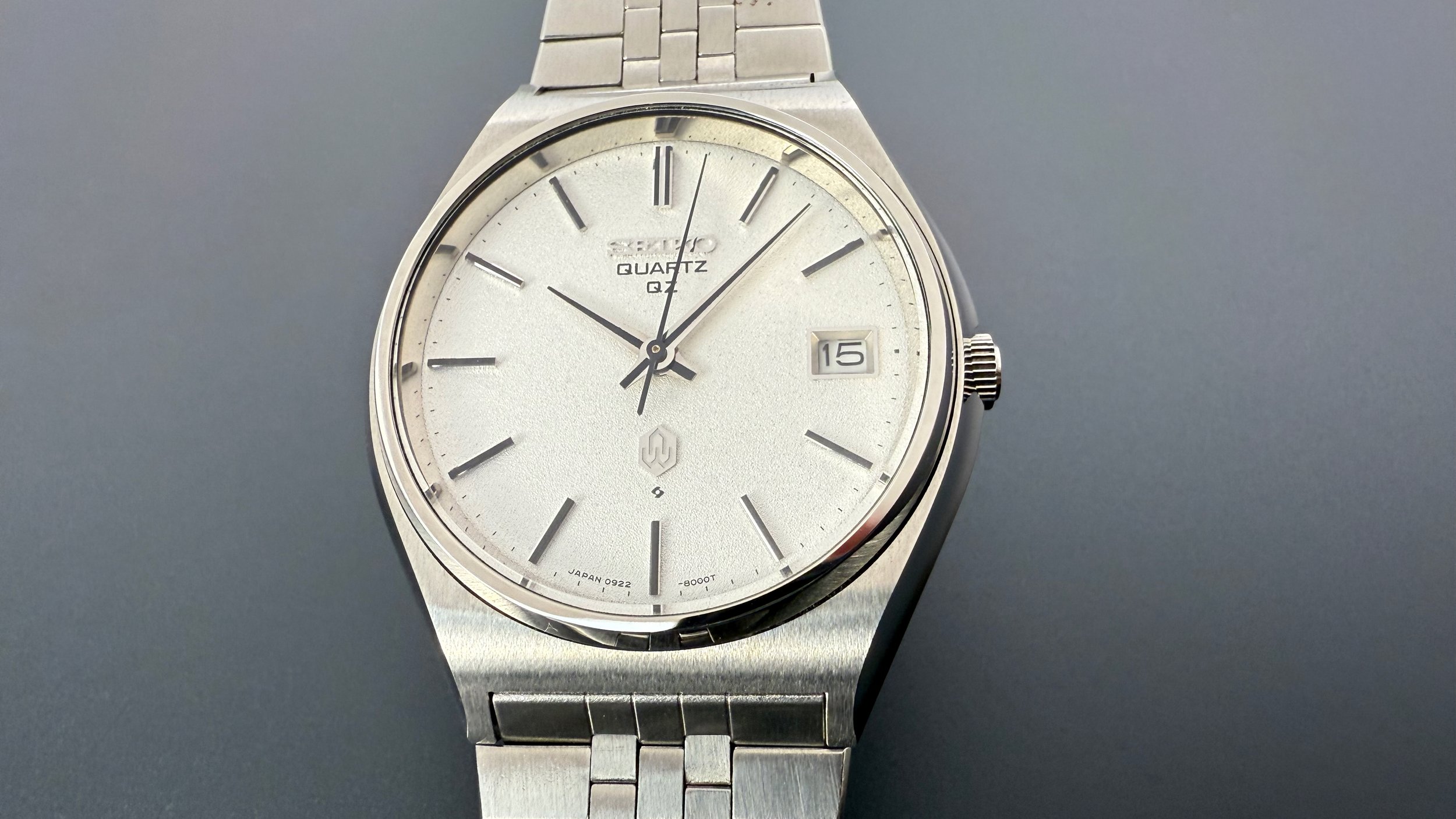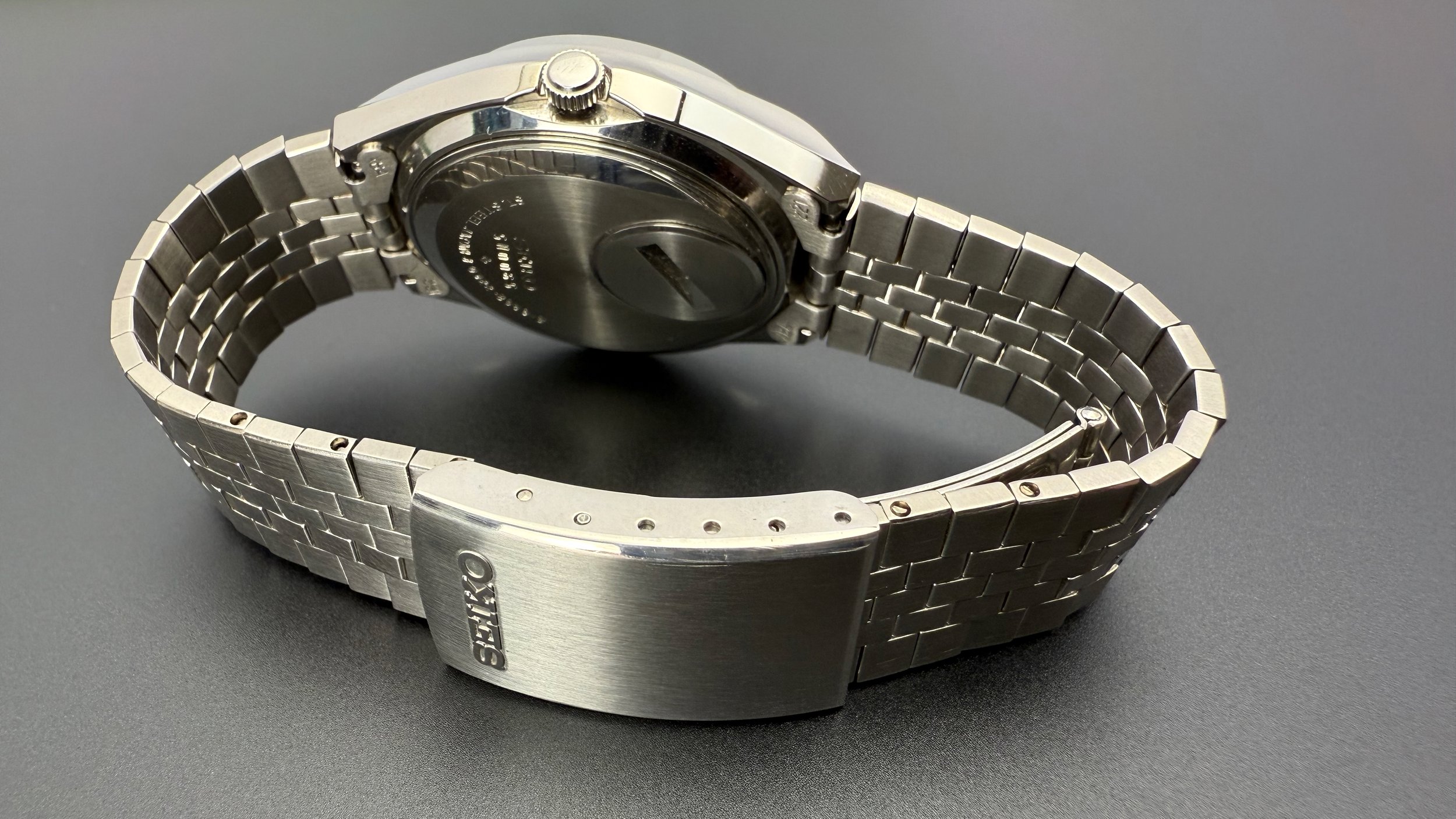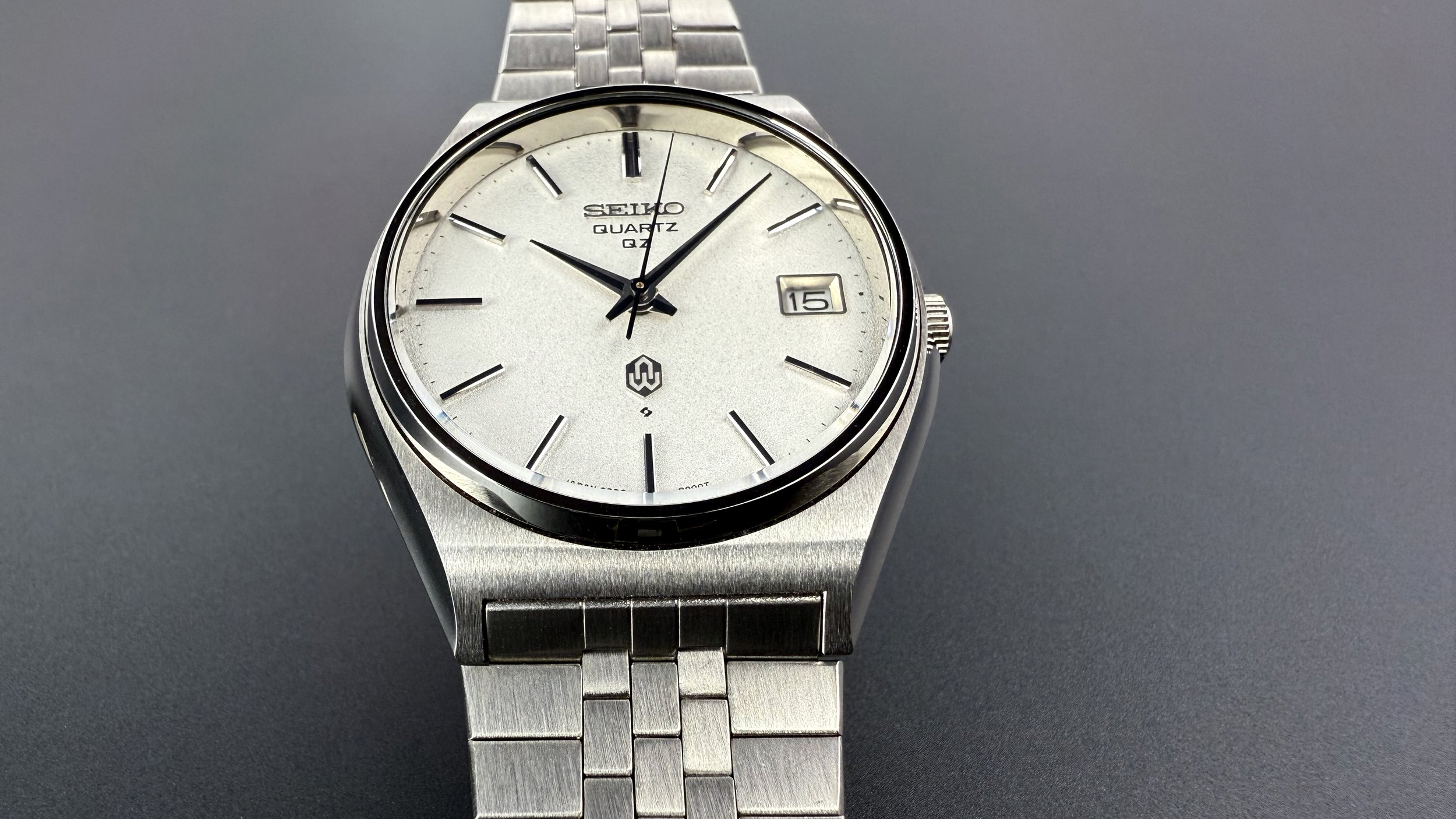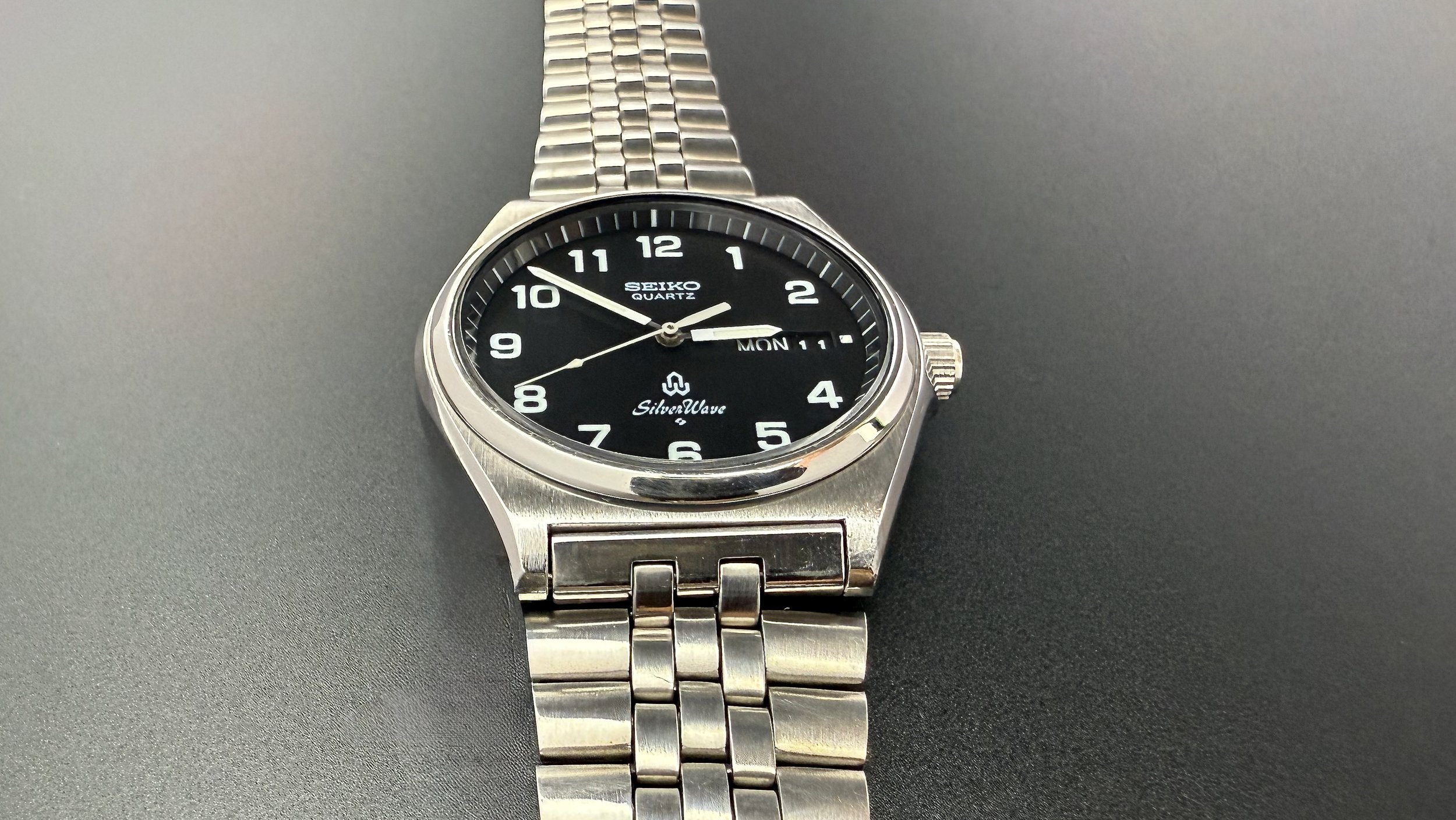
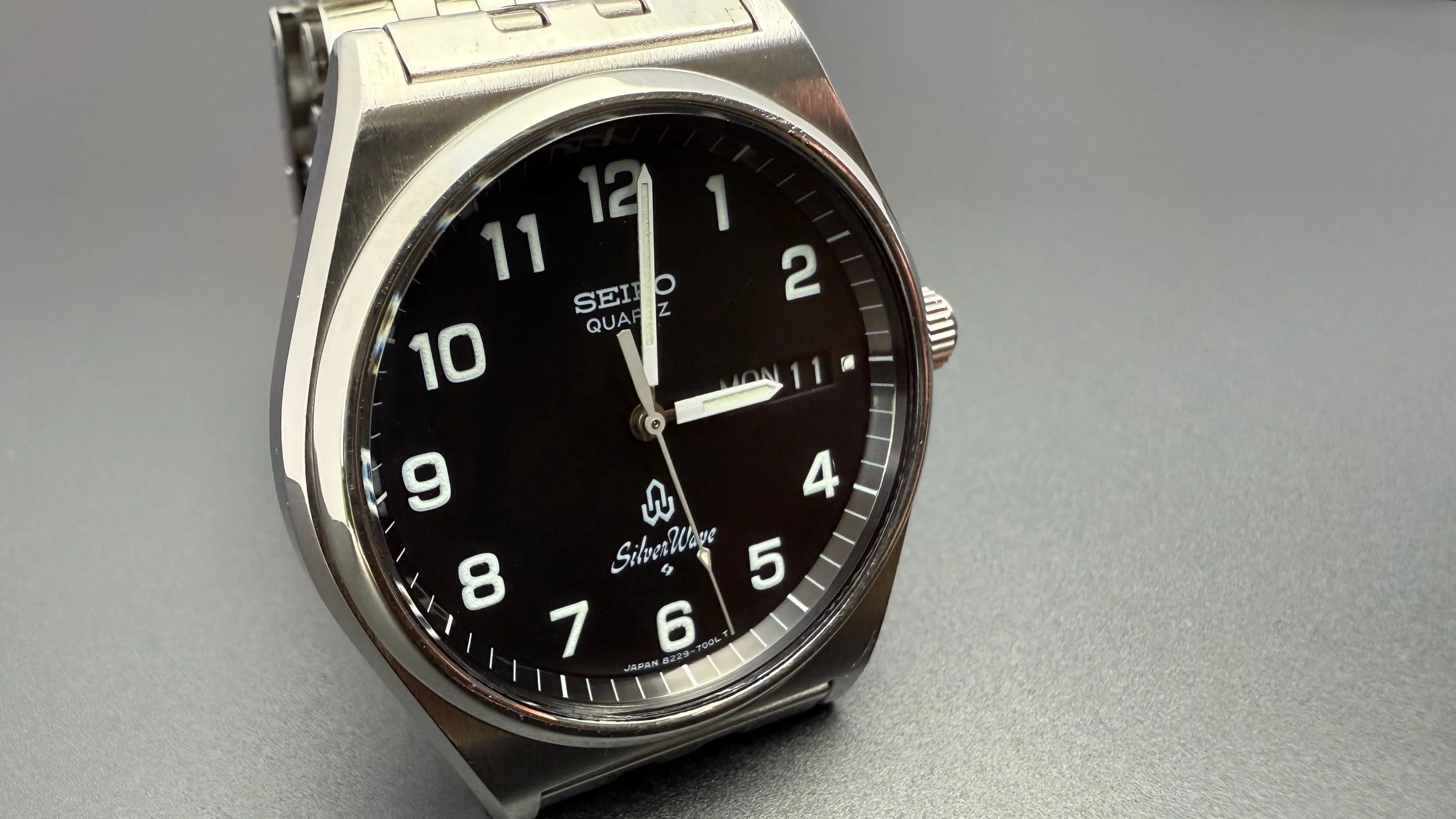
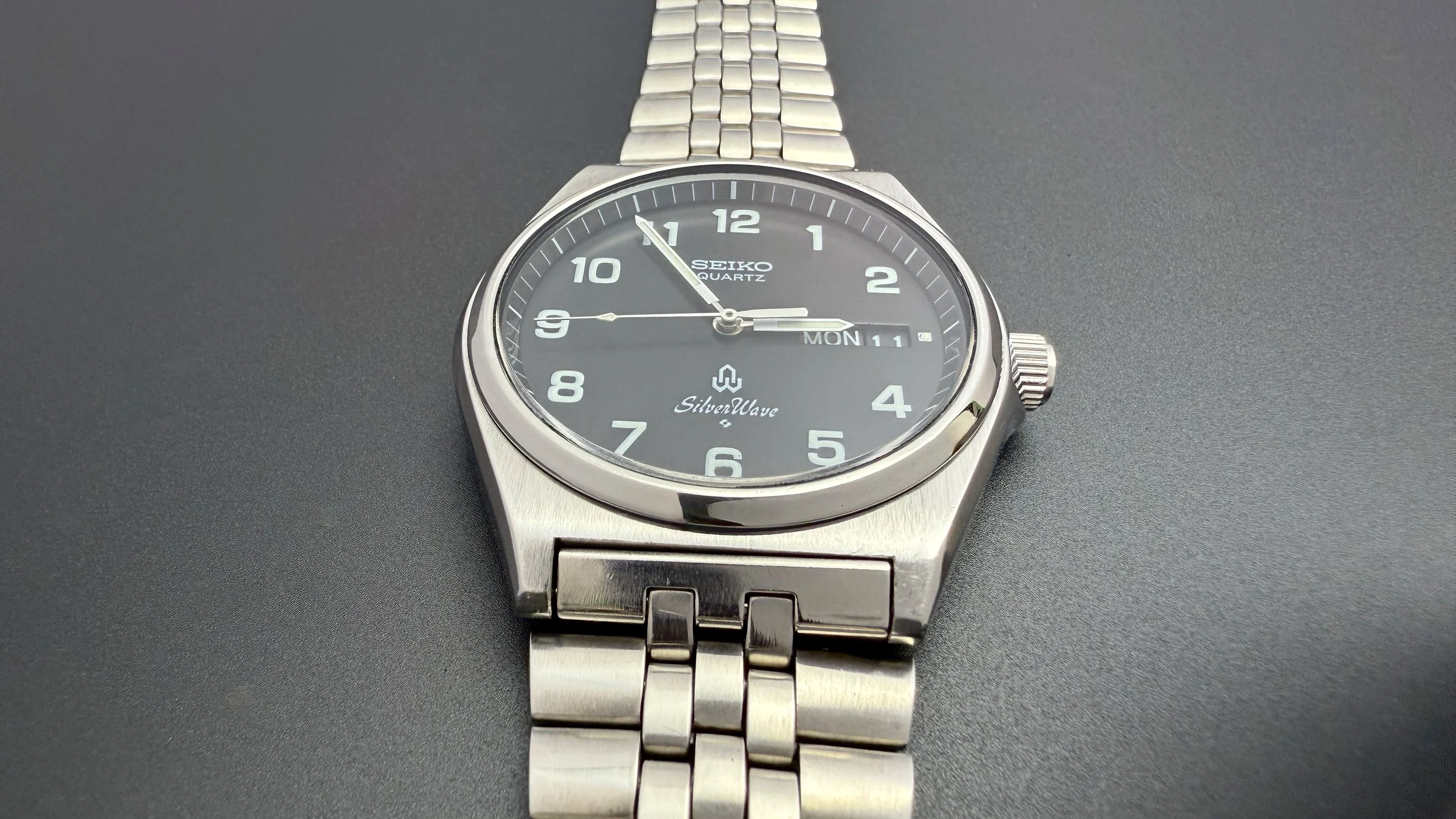
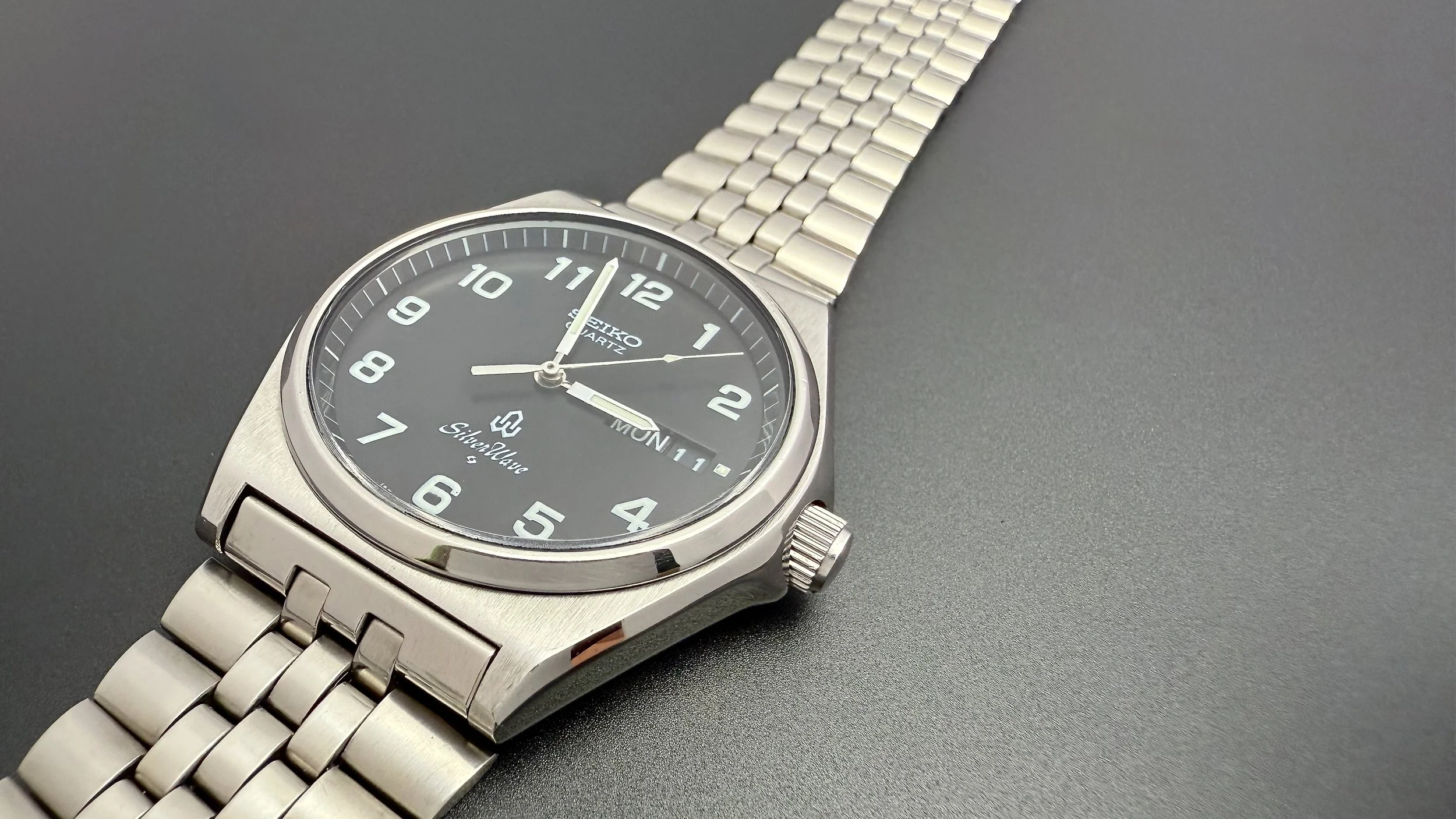
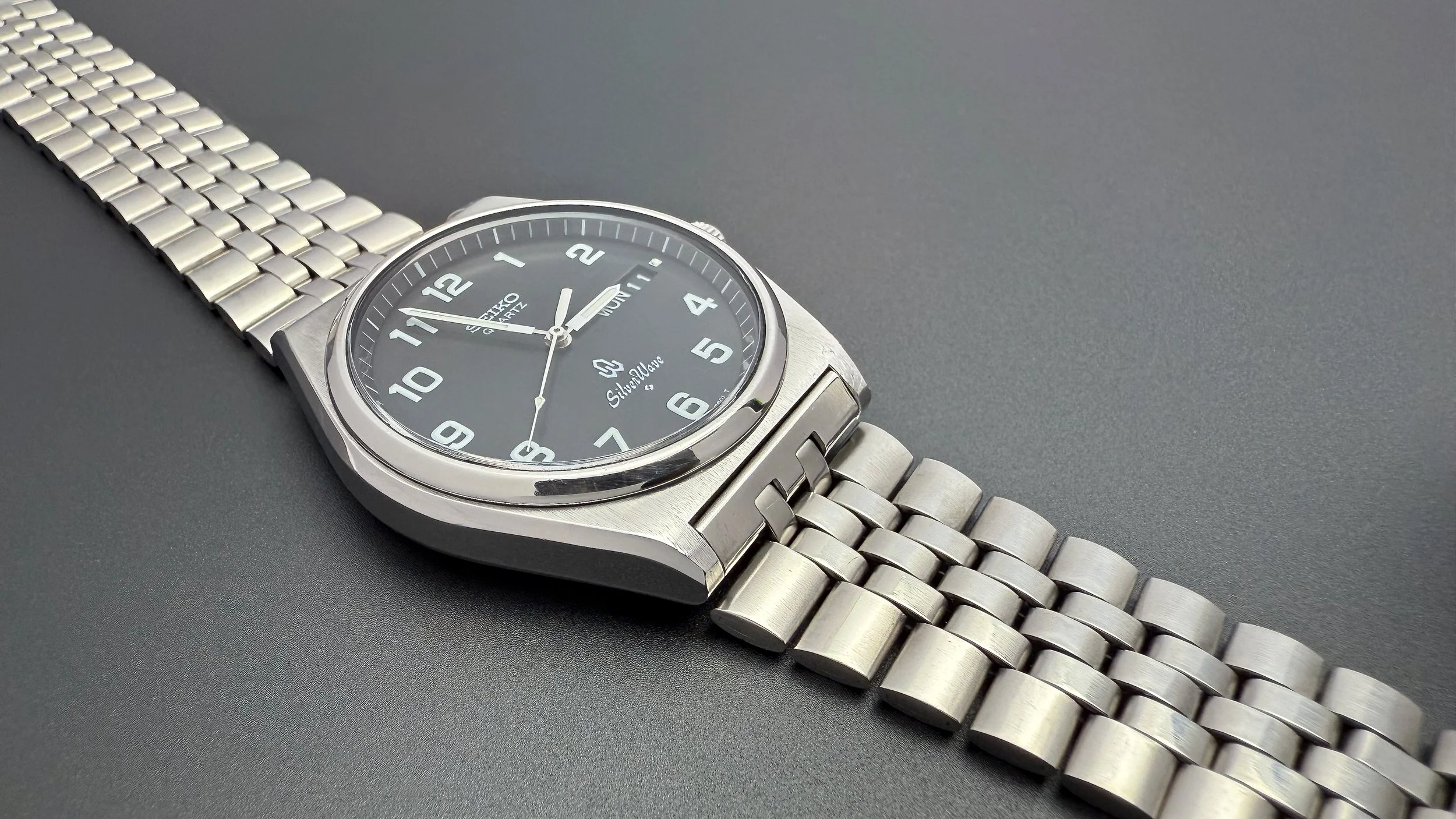

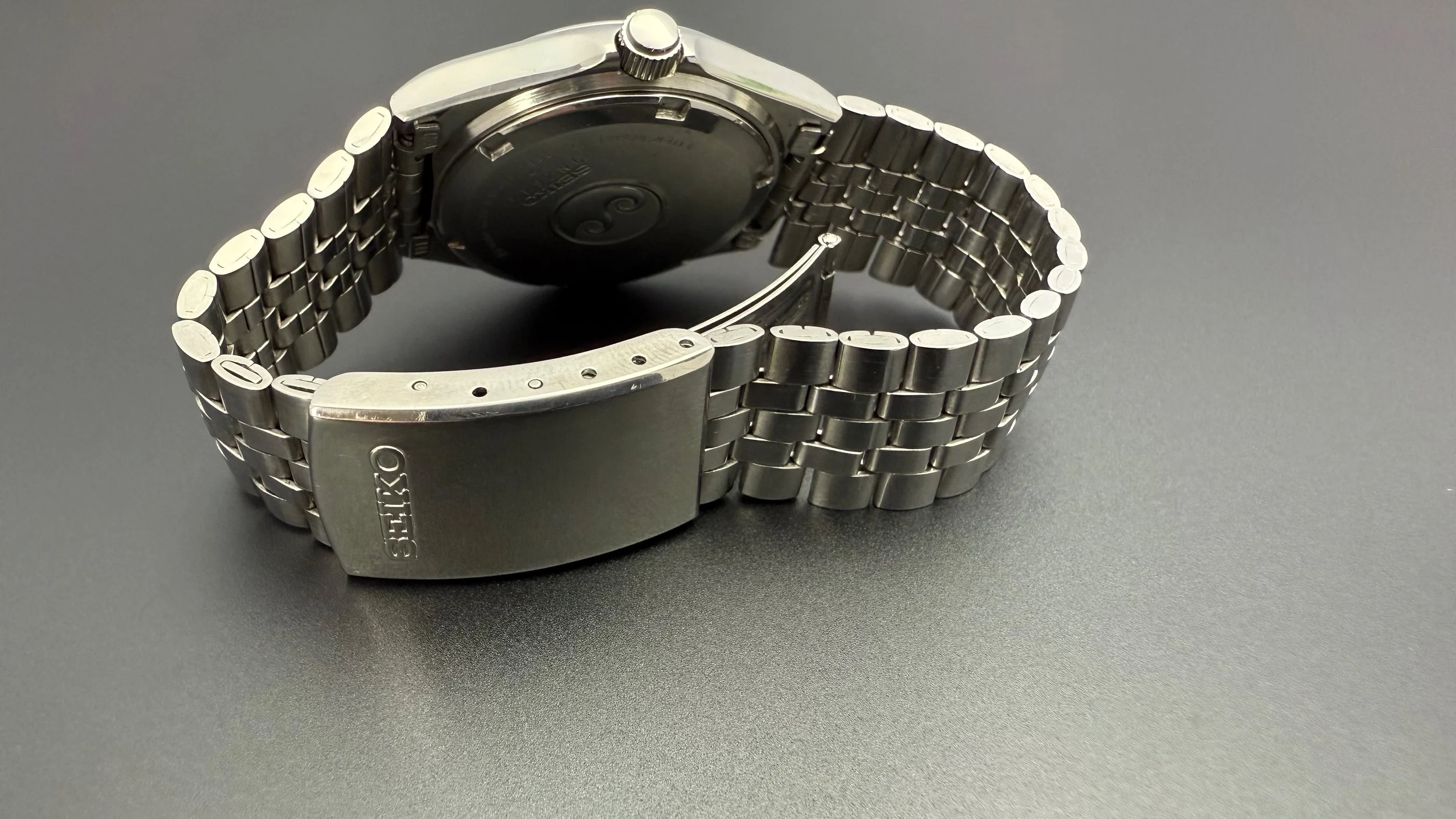

Seiko Silverwave 8229-7000 PWF038
Seiko SilverWave: From Early Diver to Quartz Evolution
Origins of the SilverWave – The J12082 (1961–1964)
The Seiko SilverWave J12082, introduced in 1961, marked Seiko’s first attempt at a dive-capable wristwatch. Produced until 1964, it featured a 37 mm stainless steel case, screw-down case back, and a bi-directional internal rotating bezel operated by a single crown. At 50 meters of water resistance, it represented Seiko’s initial step into the sports and dive category.
The watch used the Seikosha Seikomatic Cal. 603 automatic movement, beating at 18,000 bph and fitted with 20 jewels. This movement was later renamed as the Cal. 6201 and would form the basis for later 62xx movements, including those used in the 62MAS and 6215 professional divers.
The SilverWave J12082 also introduced the “tsunami” motif on the case back—a symbol that would go on to become a hallmark of Seiko dive watches. Early versions used a delicate, easily worn application, unlike the relief-engraved versions found on modern models. No serial numbers were printed externally on these early case backs; instead, production codes were engraved on the inside.
Dial variations were numerous and included black, silver, and sunburst patterns. Applied indices, luminous hands, and stylized script text (often accented with blue to denote water resistance) gave the watch a clearly sporty character.
Expansion into Quartz – The SilverWave in the 1970s
In the mid to late 1970s, Seiko revived the SilverWave designation for a new series of quartz sports watches, building upon the mechanical legacy with enhanced precision and ruggedness. These quartz models were positioned between the Type II series and King Quartz, often priced at approximately half that of a King Quatrtz, but above base Type II models.
Quartz calibers used in SilverWave models included:
0923
5933
6030
7546
8229
9441
These movements offered reliable performance and were often cased in more robust housings than their Type II counterparts. For example, the 8229 caliber—when used in a SilverWave case—benefited from superior shock protection and water resistance.
The tsunami motif remained a visual and functional indicator of aquatic capability. Multiple tsunami designs appeared across the line, ranging from minimal wave engravings to the fully developed “full wave” motif, the latter being reserved for watches with more demanding water resistance specifications.
Construction and Functional Traits of Quartz SilverWaves
Quartz SilverWaves shared many of the mechanical models’ core attributes:
Screw-down crowns (typically at 3 or 4 o’clock), sometimes with crown guards
Screw-in case backs
Unidirectional bezels on select models
Luminous indices and hands, including lume-tipped seconds hands
Drilled lugs for easier strap changes on some models
Unlike many quartz watches of the time—often equipped with battery hatches and push-pull crowns—Silverwaves offered more complete casing solutions for daily and active wear.
Market Position and Collectibility
Early mechanical SilverWaves (J12082 and 697990) are increasingly difficult to find in well-preserved condition. Moisture ingress, dial discoloration, and worn bezels are common. Parts for internal bezels and crystals are scarce, and genuine replacement components are seldom available. Prices for the 30M-rated 697990 typically range between $400 and $800, while 50M-rated J12082 models command higher values depending on condition.
The quartz SilverWaves, while less rare, offer significant value for collectors seeking rugged, function-oriented vintage quartz watches. Their combination of sport-oriented features and quartz precision makes them appealing for those interested in late-1970s tool watches.
Concluding Notes
The Seiko SilverWave series stands at the intersection of Seiko’s early dive experimentation and quartz innovation. From the mechanically driven J12082 to the robust quartz models of the late 1970s, SilverWave watches reflect both technological transition and a commitment to durability.
Their ongoing relevance is underscored by the continuity of visual cues like the tsunami case back and their place in Seiko’s diver lineage. For collectors and enthusiasts, they offer insight into a period of watchmaking defined by rapid change—mechanical refinement on one side, and quartz-driven resilience on the other.
Seiko SilverWave: From Early Diver to Quartz Evolution
Origins of the SilverWave – The J12082 (1961–1964)
The Seiko SilverWave J12082, introduced in 1961, marked Seiko’s first attempt at a dive-capable wristwatch. Produced until 1964, it featured a 37 mm stainless steel case, screw-down case back, and a bi-directional internal rotating bezel operated by a single crown. At 50 meters of water resistance, it represented Seiko’s initial step into the sports and dive category.
The watch used the Seikosha Seikomatic Cal. 603 automatic movement, beating at 18,000 bph and fitted with 20 jewels. This movement was later renamed as the Cal. 6201 and would form the basis for later 62xx movements, including those used in the 62MAS and 6215 professional divers.
The SilverWave J12082 also introduced the “tsunami” motif on the case back—a symbol that would go on to become a hallmark of Seiko dive watches. Early versions used a delicate, easily worn application, unlike the relief-engraved versions found on modern models. No serial numbers were printed externally on these early case backs; instead, production codes were engraved on the inside.
Dial variations were numerous and included black, silver, and sunburst patterns. Applied indices, luminous hands, and stylized script text (often accented with blue to denote water resistance) gave the watch a clearly sporty character.
Expansion into Quartz – The SilverWave in the 1970s
In the mid to late 1970s, Seiko revived the SilverWave designation for a new series of quartz sports watches, building upon the mechanical legacy with enhanced precision and ruggedness. These quartz models were positioned between the Type II series and King Quartz, often priced at approximately half that of a King Quatrtz, but above base Type II models.
Quartz calibers used in SilverWave models included:
0923
5933
6030
7546
8229
9441
These movements offered reliable performance and were often cased in more robust housings than their Type II counterparts. For example, the 8229 caliber—when used in a SilverWave case—benefited from superior shock protection and water resistance.
The tsunami motif remained a visual and functional indicator of aquatic capability. Multiple tsunami designs appeared across the line, ranging from minimal wave engravings to the fully developed “full wave” motif, the latter being reserved for watches with more demanding water resistance specifications.
Construction and Functional Traits of Quartz SilverWaves
Quartz SilverWaves shared many of the mechanical models’ core attributes:
Screw-down crowns (typically at 3 or 4 o’clock), sometimes with crown guards
Screw-in case backs
Unidirectional bezels on select models
Luminous indices and hands, including lume-tipped seconds hands
Drilled lugs for easier strap changes on some models
Unlike many quartz watches of the time—often equipped with battery hatches and push-pull crowns—Silverwaves offered more complete casing solutions for daily and active wear.
Market Position and Collectibility
Early mechanical SilverWaves (J12082 and 697990) are increasingly difficult to find in well-preserved condition. Moisture ingress, dial discoloration, and worn bezels are common. Parts for internal bezels and crystals are scarce, and genuine replacement components are seldom available. Prices for the 30M-rated 697990 typically range between $400 and $800, while 50M-rated J12082 models command higher values depending on condition.
The quartz SilverWaves, while less rare, offer significant value for collectors seeking rugged, function-oriented vintage quartz watches. Their combination of sport-oriented features and quartz precision makes them appealing for those interested in late-1970s tool watches.
Concluding Notes
The Seiko SilverWave series stands at the intersection of Seiko’s early dive experimentation and quartz innovation. From the mechanically driven J12082 to the robust quartz models of the late 1970s, SilverWave watches reflect both technological transition and a commitment to durability.
Their ongoing relevance is underscored by the continuity of visual cues like the tsunami case back and their place in Seiko’s diver lineage. For collectors and enthusiasts, they offer insight into a period of watchmaking defined by rapid change—mechanical refinement on one side, and quartz-driven resilience on the other.
| About | Youtube | Personal Shopping Assistant |
|---|---|---|
| Manufacture | Seiko | Silverwave |
| Model reference | PWF038 | 8229-7000 |
| Movement | Quartz | |
| Caliber | 8229 | |
| Dial | Black | |
| Case | 36x42x11mm | Steel |
| Lugs | 18mm | |
| Bracelet | CA111 | included |
| Crystal serial # | Unknown | Mineral |
| Timegrapher | Accuracy:+0.3spd | |
| Jewels | 9 | |
| Serial # | 9Nxxxx | Production: 1979-11 |
| Condition | Excellent | |
| Service | Not required | |
| Box & Papers | No box | No papers |


